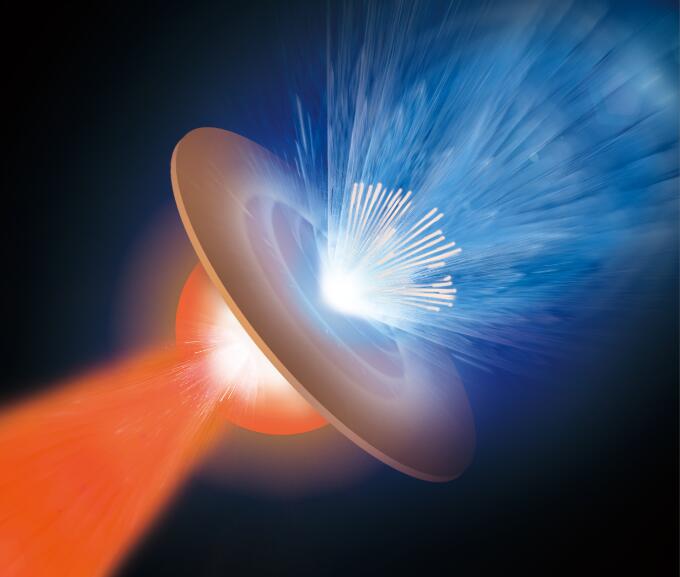SPECIAL TOPIC—Ultra short ultra intense laser plasma physics

2021, 70 (8): 084101.
doi: 10.7498/aps.70.20210096
Abstract +
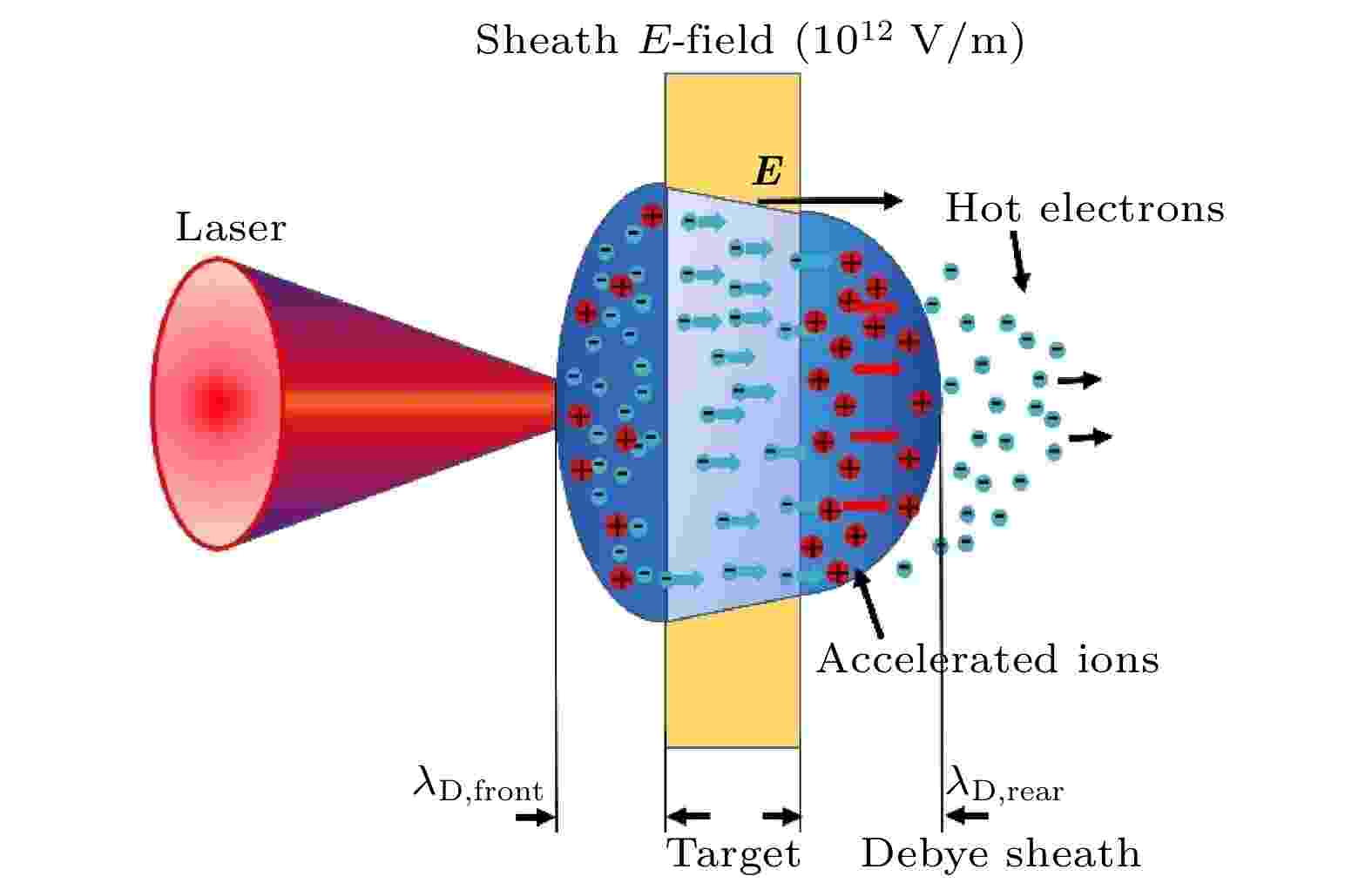
COVER ARTICLE
2021, 70 (8): 084102.
doi: 10.7498/aps.70.20202115
Abstract +
The acceleration of high-energy ions by the interaction of plasma with ultra-intense laser pulses is a frontier in the fields of laser plasma physics and accelerator physics. Laser-driven ion acceleration has achieved great success and triggered plenty of new applications after nearly twenty years’ development. This paper reviews the important experimental progress of laser-driven high-energy proton acceleration, discusses some critical issues that influence the acceleration. It also gives an introduction to new acceleration schemes developed in recent years, which promise to generate over 200 MeV protons.
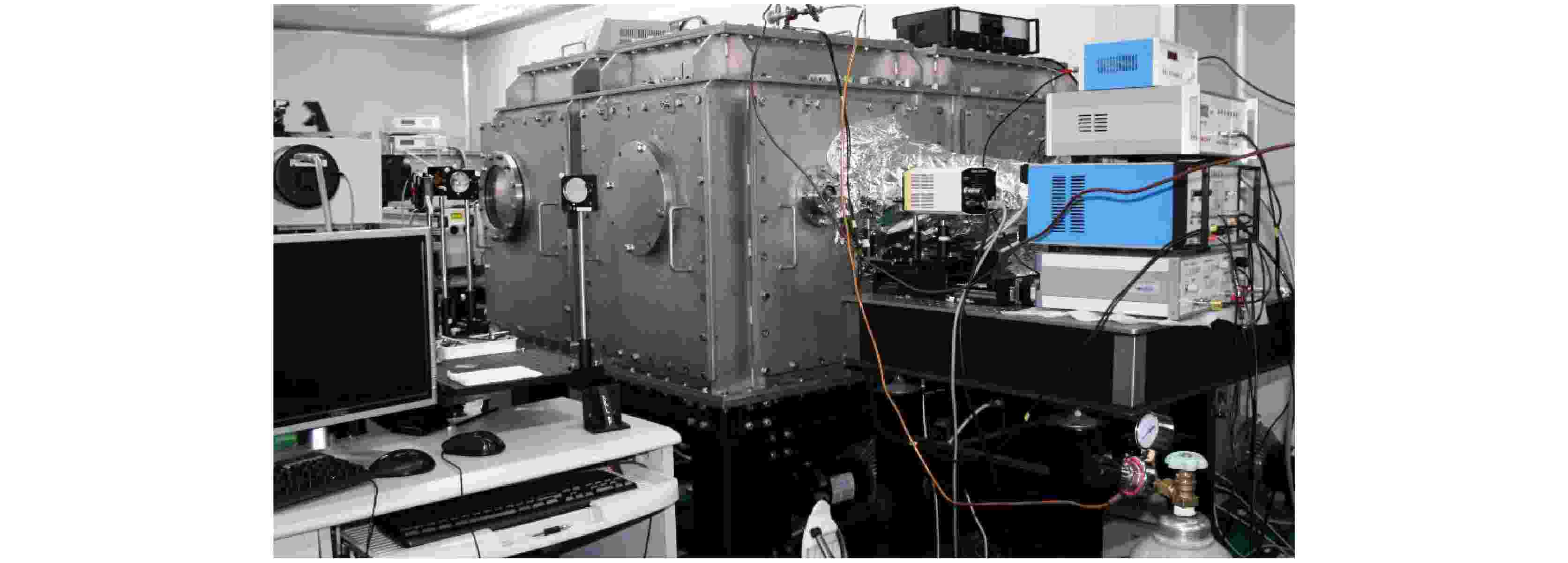
2021, 70 (8): 084103.
doi: 10.7498/aps.70.20201993
Abstract +
The acceleration gradient of laser wakefield acceleration is 3–4 orders of magnitude higher than that of state-of-the-art radio-frequency accelerators, which has unique advantages in the field of electron acceleration. With the development of application fields, higher requirements are put forward for the quality of electron beams. Achieving high stability, high energy, high charge, narrow pulse width and low emittance is the direction of long-term efforts in the field of electron acceleration. This article mainly summarizes the achievements of the relevant research teams in electron acceleration from Shanghai Institute of Optics and Fine Mechanics in recent years. The energy of the electron beam based on the acceleration of the laser wakefield is mainly limited by the dephasing length and the laser pumping loss length. Aiming at the problem that the two stages of laser wakefield acceleration cannot be controlled independently and the plasma density is difficult to balance, a cascaded acceleration scheme where the injection stage and the acceleration stage are separated is proposed. The injection stage has a higher plasma density and the acceleration stage has a lower plasma density. The acceleration stage with lower density has a longer dephasing length, so that a higher acceleration can be obtained without affecting electron injection. Finally, the electron beam energy of the order of GeV is obtained in experiment. In order to obtain a higher-quality electron beam, a low-energy-spread electron beam is obtained experimentally by using energy chirp controlling. The six-dimensional phase space brightness, which simultaneously characterizes multiple qualities such as electron beam emittance, charge and pulse width, is introduced. It is hard, with high quality only, to achieve long-distance transmission of electron beams and to generate free electron lasers. For the development of free electron lasers, the transmission and modulation of the electron beam are equally important. Taking into account the need to further optimize the acceleration of electrons from generation to realization of active control, higher quality and higher stability, it is necessary to monitor the interaction process between laser and plasma in time to obtain parameter through diagnosis. We have designed and optimized a variety of diagnostic solutions suitable for electron acceleration in the laser wakefield to achieve single-shot measurement of electron beams at different positions, such as using Betatron radiation inversion to measure ultra-low emittance. The effect of laser multifilament on the quality of the generated electron beam is also discussed.
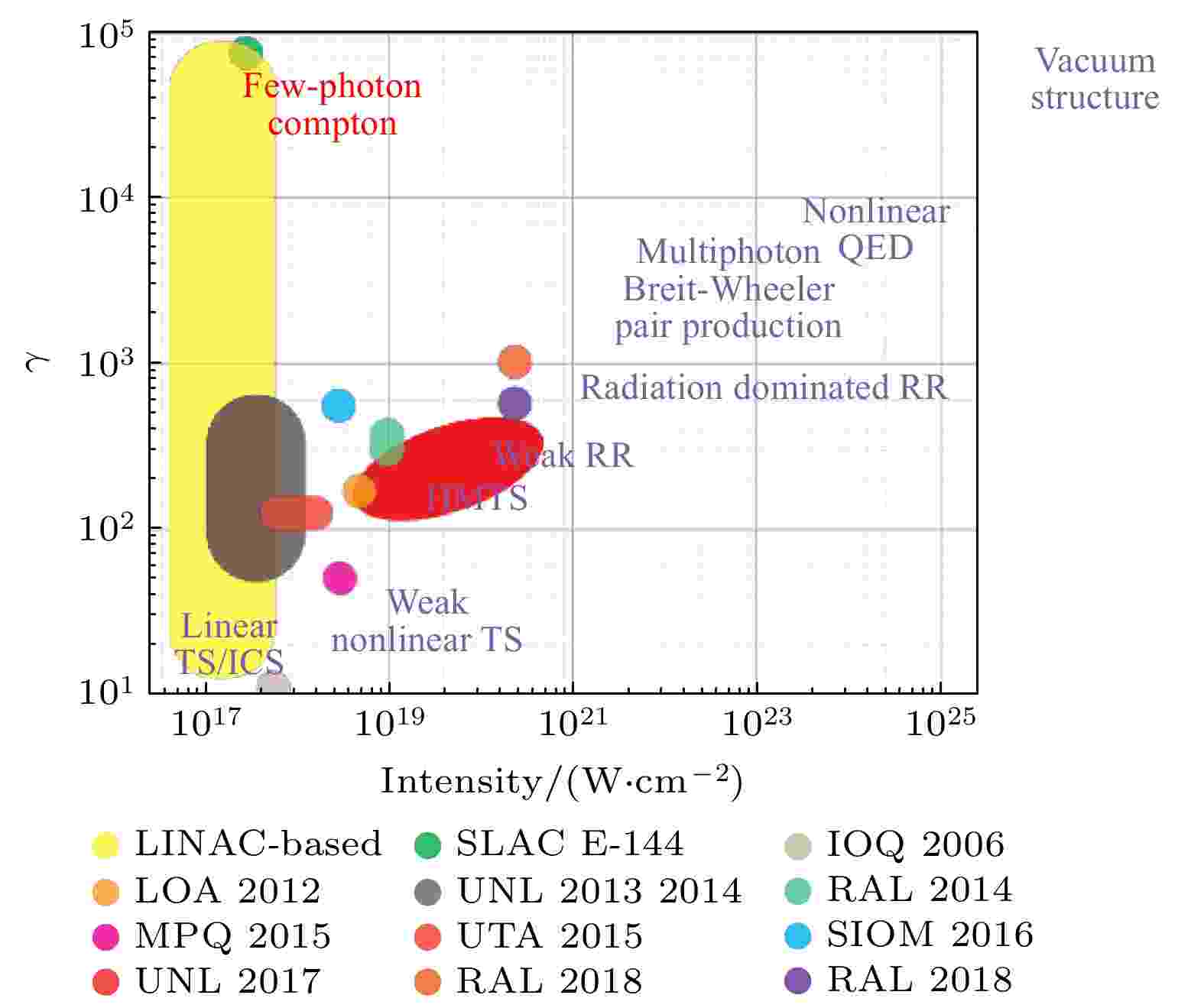
2021, 70 (8): 084104.
doi: 10.7498/aps.70.20210319
Abstract +
With the development of laser and accelerator technology, and improvement of the particle energy and field intensity, the scattering process between electron and photon will reach the highly nonlinear regime, where the multi-photon process takes place and the quantum electrodynamics starts to play a role. In the near future, with the commissioning of the multi-PW laser facilities, these effects will be available. In this article, we review the recent progress of electron-photon scattering experiments, from single or few-photon regime to high-order multi-photon regime. In the scattering process, collimated bright X/gamma-energy photons are generated, making it possible to realize a compact top-table bright light source, which is also known as inverse Compton scattering source. Finally, the prospects and challenges of scattering experiments are discussed.

2021, 70 (8): 084206.
doi: 10.7498/aps.70.20210339
Abstract +
The realizing of the detection and control of ultrafast process conduces to understanding and remoulding the physical world at a microcosm level. The attosecond light source with attosecond temporal resolution and nanometer spatial resolution can realize real-time detection and manipulation of the atomic-scale electronic dynamics and relevant effects of the substances. Therefore, attosecond science is considered as one of the most important milestones in the history of laser science. and has been listed as an important scientific and technological development direction in the coming 10 years. High-order harmonic generation (HHG) from intense laser-matter interaction is one of the most important routes to breaking through the femtosecond limit and achieving brilliant attosecond pulse radiations, and thus having aroused great interest in recent years. After more than 20-year development, the research about attosecond pulse generation by laser-gas interaction has reached a mature stage. This method produces the shortest isolated pulse in the world to date, with a pulse width being only 43 as. However, this method based on ionization-acceleration-combination encounters inevitable difficulties in pursuing the relativistically intense attosecond pulses and the highest possible photon energy. Quite a lot of studies have proved that the HHG efficiency from laser-plasma interaction can be a few orders of magnitude higher than that in gaseous media, which makes it possible to produce pulses with shorter pulse width and higher photon energy. In this article, we introduce the main generation mechanisms, research progress and frontier applications of HHG through the laser-plasma interaction process. In Section 2, we introduce the HHG generation mechanisms, including coherent wake emission, which is used to describe the HHG process driven by a nonrelativistic laser; relativistic oscillating mirror, which can well explain most of HHG processes generated from plasma-vacuum interface in relativistic regime; coherent synchrotron emission, which is suited to explain the HHG synchronously emitted from isolated electron sheets. The research progress is summarized in Section 3 from the aspects of radiation efficiency, polarization characteristics, phase characteristics, generation and diagnosis of isolated attosecond pulses, etc. Frontier applications of these ultra-broadband intense attosecond pulses are presented in the last section, such as the study of electronic dynamics, process, coherent diffraction imaging, diagnosis of extreme states of matter, the generation of extremely intense fields, etc. Finally, an outlook on the future development trends and innovation breakthroughs is also presented.
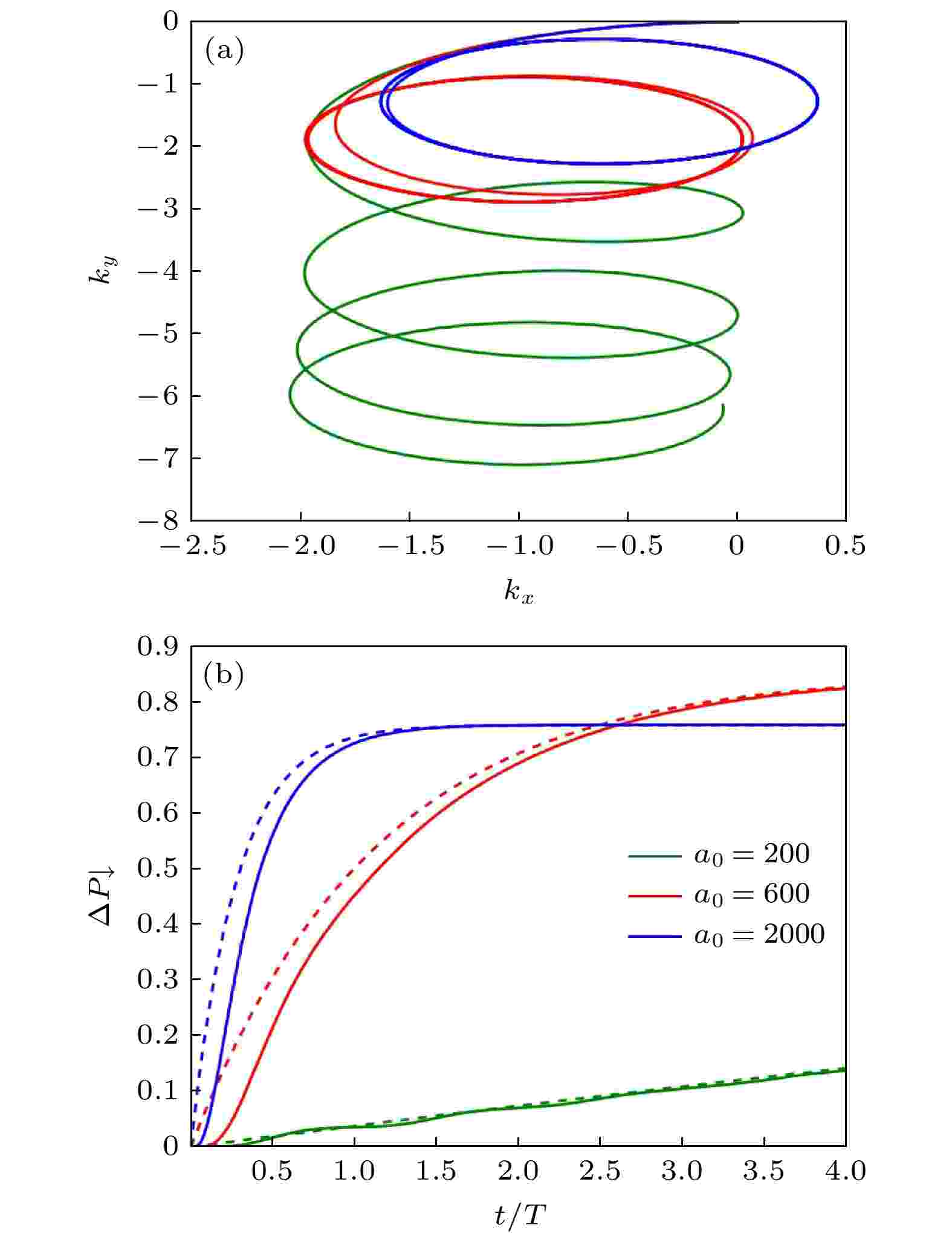
2021, 70 (8): 087901.
doi: 10.7498/aps.70.20210009
Abstract +
High-energy spin-polarized electron and positron beams and γ-rays have plenty of significant applications in high-energy, laboratory astro- and nuclear physics, and the efficient generation of such polarized beams attracts a broad research interest. Recently, with the rapid development of ultrashort ultraintense laser pulse technology, the modern laser pulses can achieve a peak intensity in a range of 1022—$10^{23}$ W/cm2 with a pulse duration of tens of femtoseconds. The interaction mechanisms between such a laser pulse and matter have been spanned from linear regime to nonlinear regime due to multiphoton absorbtion, such as nonlinear Compton scattering and Breit-Wheeler pair production. Employing spin-dependent nonlinear Compton scattering and multiphoton Breit-Wheeler scattering in laser-matter interaction paves a new way for generating the high-polarized high-density high-energy electron and positron beams and γ-rays with tens of femtoseconds in pulse duration. This article briefly reviews the research progress of polarized electron and positron beams and γ-rays generated by laser-matter interaction, and also introduces the principles and main conclusions.
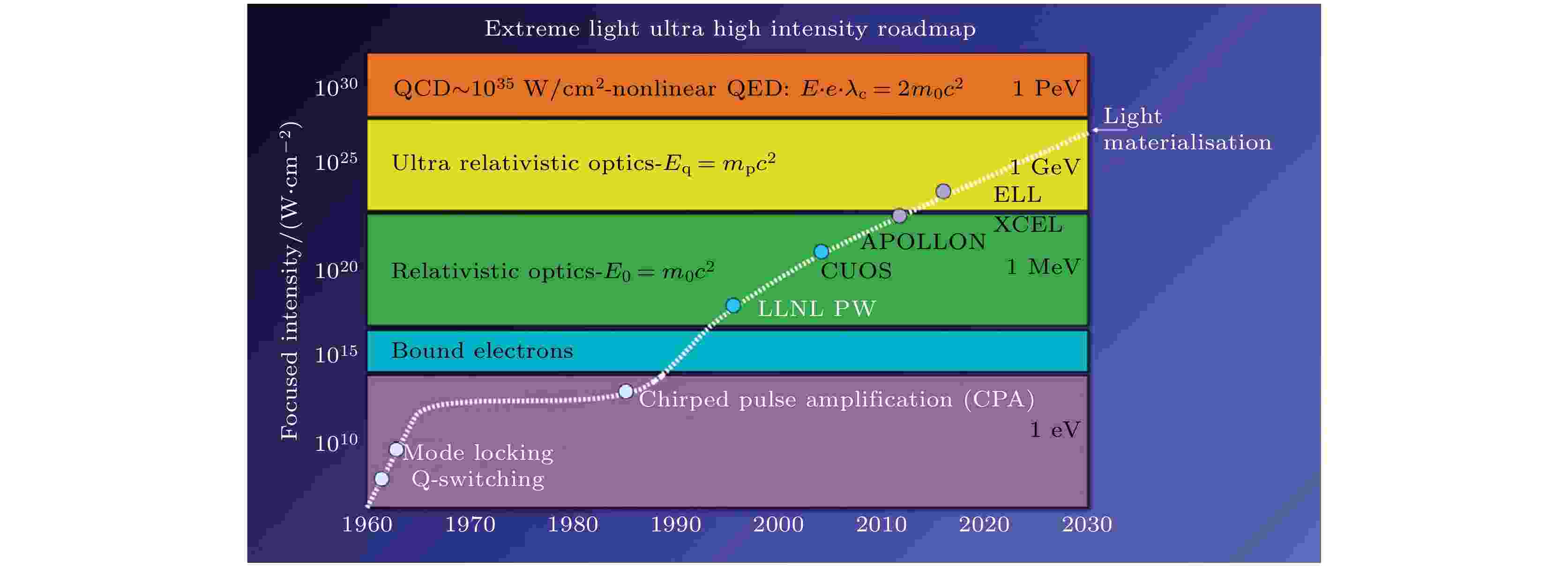
2021, 70 (8): 085202.
doi: 10.7498/aps.70.20202224
Abstract +
The advent of high-power ultra-short ultra-intense laser pulses opens up the new frontiers of relativistic nonlinear optics, high-field physics, laser-driven inertial confined fusion, etc. In recent years, with the construction of high power laser facilities at a multi-petawatt (PW) level and above, the interaction between laser and matter enters into a new realm of high field physics, where extremely rich nonlinear physics is involved. In addition to classical nonlinear physics involving wave-particle interactions, relativistic effects, and ponderomotive force effects, the quantum electrodynamic (QED) effects occur, such as radiation reaction force, electron-positron pair production, strong γ-ray radiation, QED cascades, and vacuum polarization. This paper presents a brief overview of electron-positron pair creation and bright γ-ray emission driven by the extremely intense laser fields.
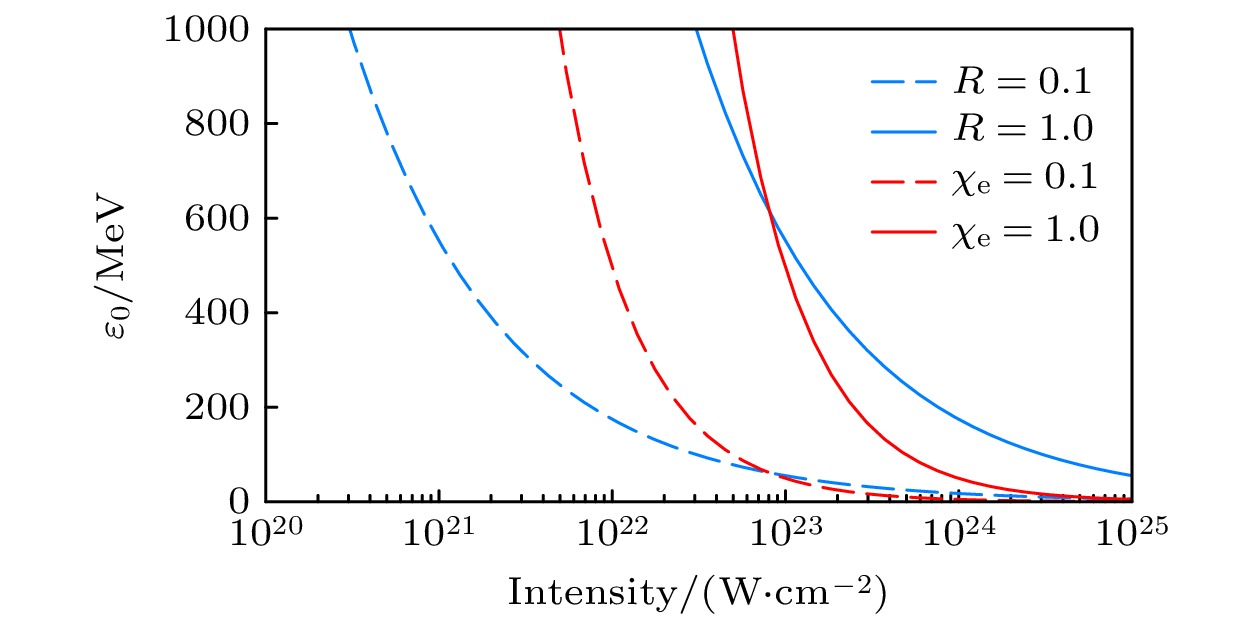
2021, 70 (8): 085203.
doi: 10.7498/aps.70.20210091
Abstract +

2021, 70 (8): 085204.
doi: 10.7498/aps.70.20210549
Abstract +
All-laser-driven Thomson scattering based on laser wakefield acceleration can provide high quality X-ray and greatly reduce the source size. Compared with two-pulse setting, the self-reflecting setting can reduce the requirement for temporal and spatial synchronization in experiment. However, it is difficult to optimize X-ray because Thomson scattering is coupled with laser wakefield acceleration in this process. In this paper, we correct theory formula through numerical simulation, and analyze the parameters quantitatively in laser wakefield acceleration and Thomson scattering, such as spot size, duration and energy of laser and electron beam, and reflectivity of plasma mirror. Then we can trace the parameters by using the modified formula rather than the numerical simulation with similar accuracy and less time. The modified formula is also used to optimize the self-reflecting all-laser-driven Thomson scattering X-ray under the given laser conditions. The optimal X-ray luminance and photon number can be obtained by changing the plasma density and the position of the plasma mirror.
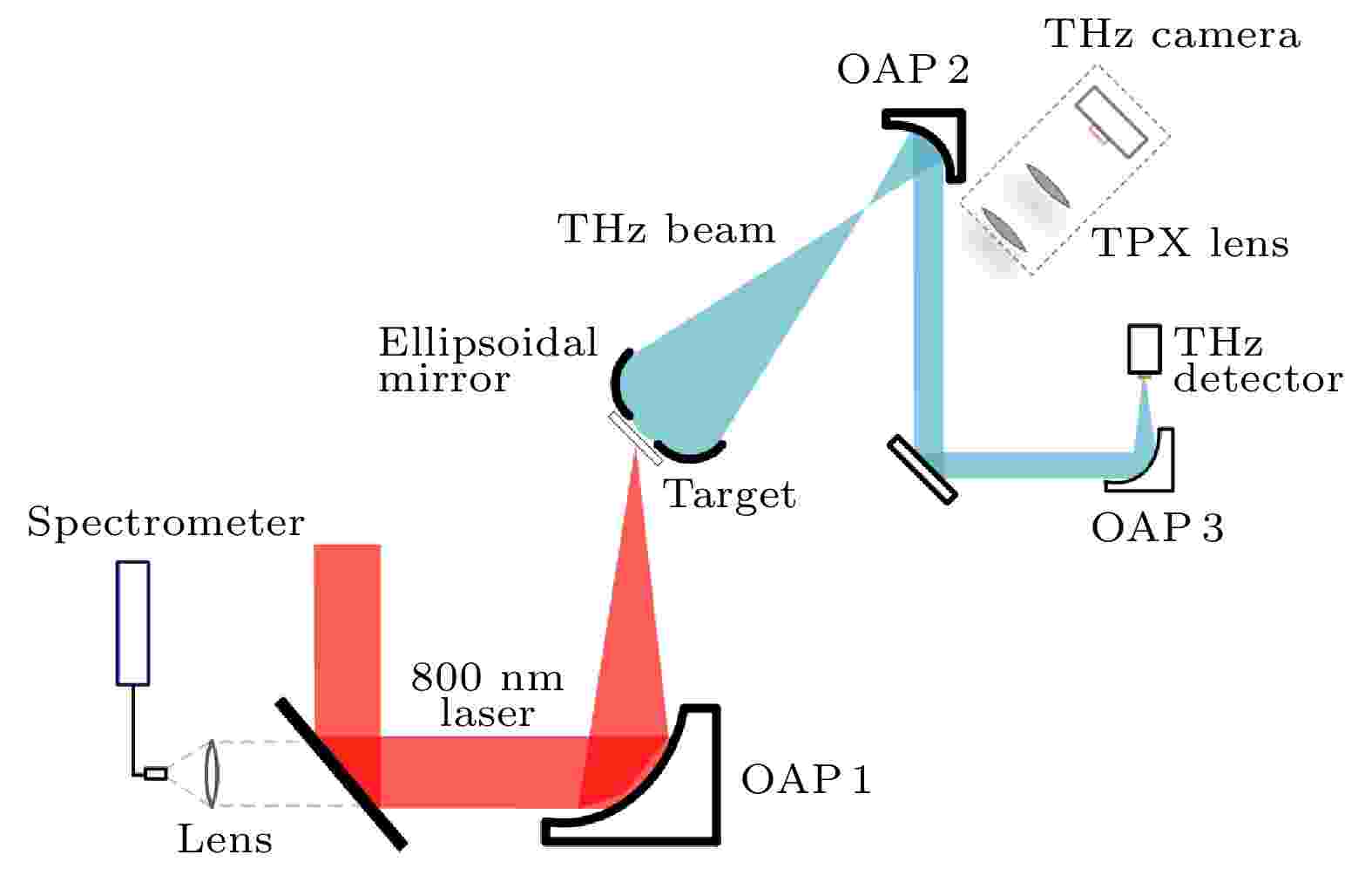
2021, 70 (8): 085205.
doi: 10.7498/aps.70.20210518
Abstract +
Powerful terahertz (THz) radiation sources are crucial to the development of THz science. High-energy strong-field THz pulses have many significant applications such as in the ultrafast control of matter and the THz-driven electron acceleration. In recent years, ultraintense laser-plasma interactions have been proposed as a novel approach to strong-field THz generation. In this paper, the experimental results are presented about the generation of THz radiation from a solid foil irradiated by a 10-TW femtosecond laser pulse. The THz energy as a function of laser energy and defocusing amount is studied. It is found that both the THz energy and the laser-to-THz conversion efficiency increase nonlinearly with the laser energy increasing. At maximum laser energy ~270 mJ, the measured THz pulse energy is 458 μJ, corresponding to a laser-to-THz energy conversion efficiency of 0.17%. No indication of saturation is observed in the experiment, implying that a stronger THz radiation could be achieved with higher laser energy. By simultaneously monitoring the backward scattered laser light spectrum, it is qualitatively understood that the observed THz radiation as a function of laser energy and laser defocusing distance is closely related to the electron heating mechanisms at different laser intensities. The THz spectrum and polarization are characterized by using different band-pass filers and a wire-grid polarizer, respectively. The THz radiation covers an ultrabroad band ranging from 0.2 THz to 30 THz, and shows a radially polarized distribution. By fitting the measured THz spectrum with the theory of coherent transition radiation, the THz pulse duration is inferred to be about 30 fs. At the THz focal spot of ~1 mm in size, the THz field strength is evaluated to be 3.68 GV/m. Such a strong-field THz source will enable the study of extreme THz-matter interactions.
REVIEW
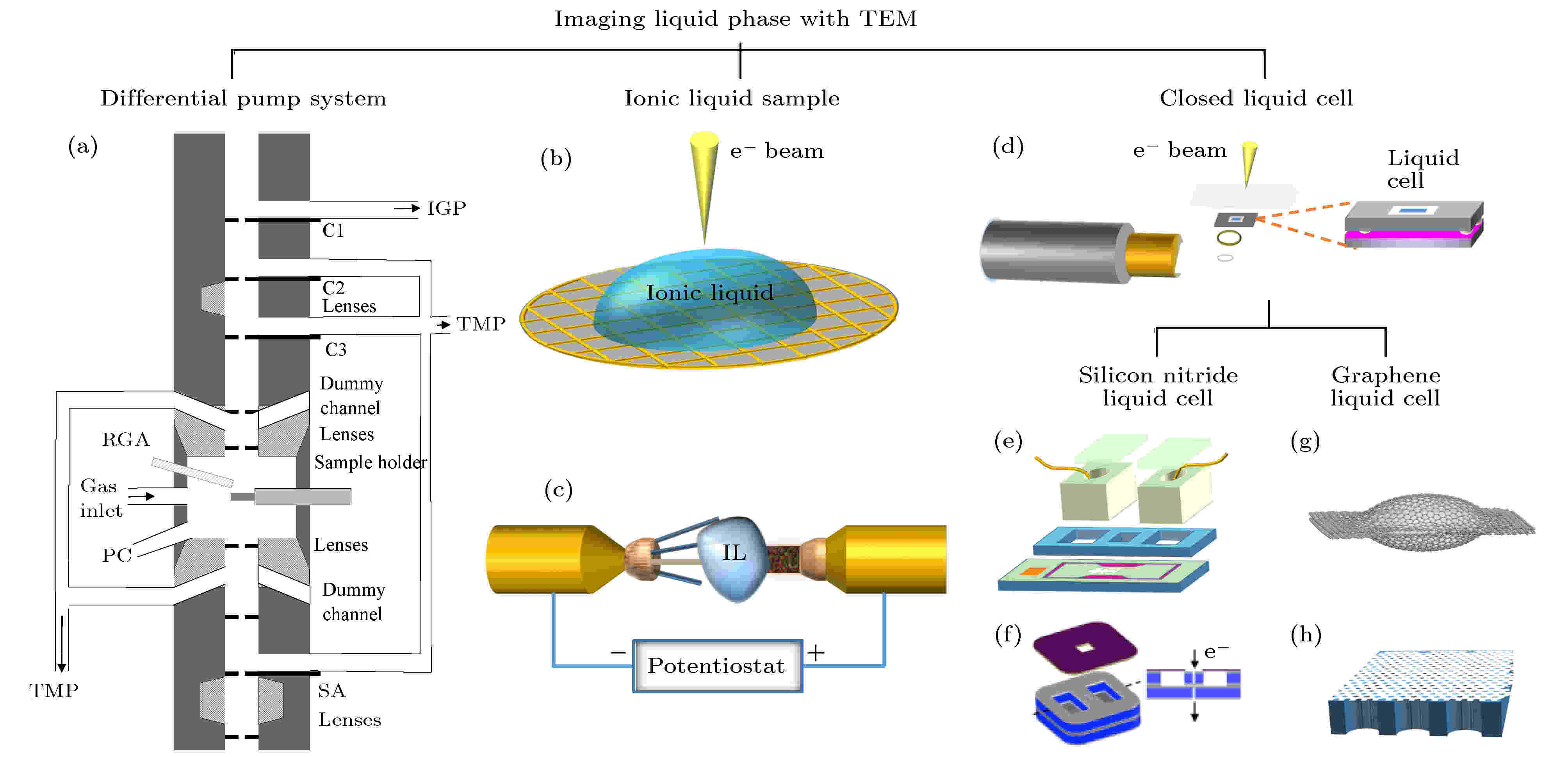
EDITOR'S SUGGESTION
2021, 70 (8): 086701.
doi: 10.7498/aps.70.20201899
Abstract +
Based on the improvement of transmission electron microscope (TEM), nano fabrication, and film deposition, and with the development of the in-situ liquid TEM and nano characterization platform, various relevant nano researches have been carried in different fields. In this article, the principle, basic design requirements, development and typical preparation technologies of the liquid cell are briefly introduced. Subsequently, the state-of-the-art applications of liquid cell transmission electron microscope in the nucleation and growth of nanoparticles are reviewed. Finally, the opportunities and challenges faced by the frontier development of this technology are also discussed. This article provides constructive discussion about and support for advanced nano characterization technology and precise manipulation of atomic structures.

2021, 70 (8): 087303.
doi: 10.7498/aps.70.20201842
Abstract +
Metal halide perovskites, which have aroused the enormous interest from scientists recently, are widely used in a variety of areas such as solar cells, light emitting diodes (LED) and lasers. Nanomaterials exhibit distinguished optical and electrical properties because of their quantum confinement as well as strong anisotropy. The metal halide perovskite nanomaterials have the advantages of adjustable band gap, high quantum efficiency, strong photoluminescence, quantum confinement and long carrier-lifetime. Besides, as a result of the low-cost fabrication and the sufficient raw material reserve, they have a broad prospect in photoelectric applications. But on the other hand, the poor stability of metal halide perovskites, due to the defect trap states and grain boundaries on the surface, cast a shadow towards their practical applications. The moisture, oxygen and ultraviolet of the environment will degrade their photoelectric performances significantly. In this review, we introduce the synthesis and growth mechanism of metal perovskite nanomaterial quantum dots, nanowires and nanoplatelets, and present their novel photoelectric properties and applications in various photoelectric devices. Finally we summarize the emerging challenges and discuss the next-generation photoelectric applications.
GENERAL
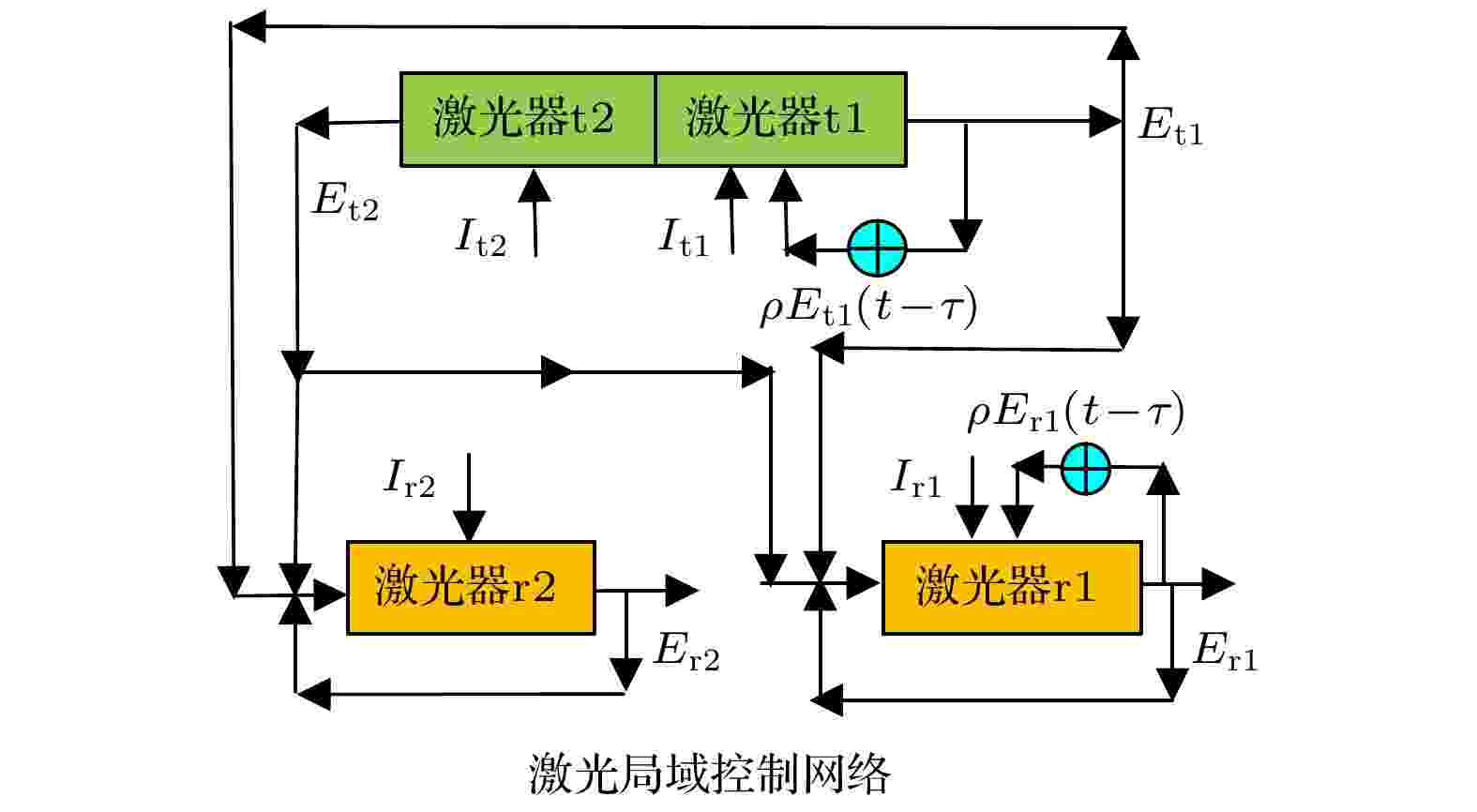
2021, 70 (8): 080501.
doi: 10.7498/aps.70.20201251
Abstract +
In this work, we study the chaos-control and parallel queue synchronization of a laser local area network (LAN). We present and study specifically a “single-queue-double-parameter” method of the parallel series queue dynamic behavior synchronization of the controlled laser LAN under two optoelectronic delay feedback controllers, and establish the mathematical and physical model of the controlled laser LAN. The LAN node is composed of two space coupled lasers with different parameters and other two single lasers, where two lasers series produce two different parallel queues, which results in two different chains of LAN nodes. Optical LAN links are composed of two optical parallel-crossing paths and two photoelectric delay feedback controllers setting in two lasers of LAN, which creates a method of double-parameter control of LAN. Through the analysis of the stability theory of differential equation and the dynamic characteristic equation of coupled lasers of LAN, our mathematical theory demonstrates that the chaos-control of laser LAN can be achieved by two photoelectric delay feedback controllers adjusting photoelectric feedback levels and feedback delay time of one of the two coupled laser and another single laser, respectively. Making analysis of the stability theory of differential equation and the dynamic characteristic equation of LAN nodes in two queue chains, we demonstrate theoretically how to obtain synchronization in network nodes of the controlled LAN on two queue chains by controlling optical feedback levels, and by the photoelectric delay feedback controllers adjusting photoelectric feedback levels and feedback delay time, respectively. Using our numerical calculation of parallel queue synchronization, the node laser’s waveform and its phase space trajectory, we find that very lasers of network nodes of the controlled LAN can lead to the parallel queue synchronization of a double-period, a three-period, a four-period and other quasi-periods while these quasi-periodic synchronizations and dynamic synchronizations are controlled in two queue chains of LAN nodes when we let the photoelectric feedback level and the delay time shift on some parameters. We find also two controlled quasi-periodic parallel queue synchronization regions. This paper also presents an application case of laser LAN multi-point chaotic carrier synchronous emission and ultra-wideband communication. This is a new type of controlled laser LAN system, which has the core elements of optical LAN and the characteristics of multi-variable, multi-dimension and parallel queue chaos-control techniques of complex dynamic networks. It also has the function of optical network ultra-wideband communication. The results have important reference value for studying the LAN, optical network and its synchronization and control, laser technology and chaos.
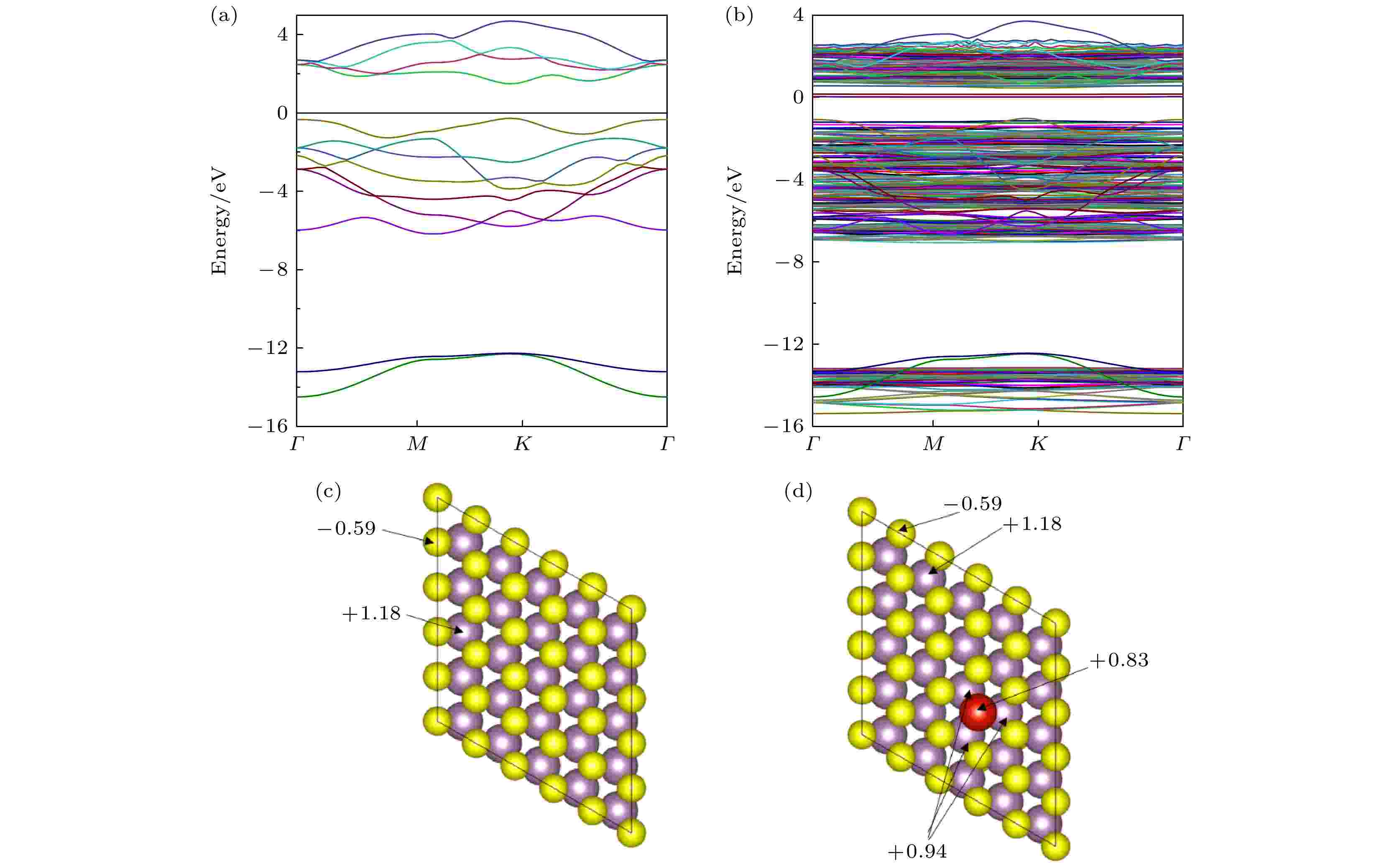
2021, 70 (8): 080701.
doi: 10.7498/aps.70.20202043
Abstract +
With their high toxicity and fast diffusion, toxic agents such as mustard gas and sarin are chemical warfare agents that are of high lethality and difficult to protect against. Therefore the high-sensitivity detection of toxic agents has become a focus in research on chemical detection in the world. Two-dimensional (2D) MoS2 is at the forefront of research because of its unique structure and promising sensing performance. In this study, theoretical calculations based on the first-principles method are carried out to investigate the structural stability, electronic properties, and gas adsorption of 2D MoS2 before and after V doping in order to explain the gas-sensing mechanism of V-doped 2D MoS2. The binding energy of V atom at the S-vacancy is –6.85 eV, indicating that the V atom can be stably doped into the S vacancy of the 2D MoS2 supercell structure at room temperature due to the strong interaction between the doped V atom and S vacancy of monolayer MoS2. The V atom doped into the 2D MoS2 system gives out electrons to surrounding Mo atoms as a donor center, thus enhancing the electric conductivity of the material. The calculation of adsorption energy indicates that the adsorption process of NO2, NH3, sarin, and mustard gas on the surface of 2D MoS2 are all spontaneous exothermic reactions. The doping of V increases the adsorption capacity of 2D MoS2 for the 4 aforesaid gases, and strengthens the interaction between the electrons of the absorbate molecules and those of substrate surface, thus effectively enhancing the gas-sensitive property of 2D MoS2. This effect occurs due to the strong overlap between the V 3d orbitals and gas molecule orbitals, which promotes the activation of the adsorbed gas molecules. The analysis of Bader charge shows that the charge transfer occurs from V-doped monolayer MoS2 to the oxidizing gas molecules (NO2, sarin, and mustard gas) acting as acceptors. Whereas the direction of charge transfers is reversed for the adsorption of the reducing gas (NH3) behaving as donors, in which 0.11e transfer from adsorbed gas to metal V-doped monolayer MoS2. Our results suggest that V-doped monolayer MoS2 is an ideal candidate for low-cost, highly active, and stable gas sensors, which provides an avenue to the design of high active 2D MoS2-based gas sensors.

2021, 70 (8): 080702.
doi: 10.7498/aps.70.20201685
Abstract +
Charge exchange, or electron capture, between highly charged ions and atoms and molecules has been considered as one of important mechanisms controlling soft X-ray emissions in many astrophysical objects and environments. However, to model charge exchange soft X-ray emission, astrophysicists commonly use principal quantum number n and angular momentum quantum numberl resolved state-selective capture cross section data, which are usually obtained by empirical and semi-classical theory calculations. The accuracy of the theoretical model is the key to constructing an accurate X-ray spectrum. With a newly-built cold target recoil ion momentum spectroscopy apparatus, we perform a series of precise state-selective cross section measurements on Ne8+ ions’ single electron capture with He targets, with the projectile energy ranging from 1.4 to 20 keV/u. The experimentally measured Q value spectrum shows that the process of electron captured to state of Ne7+ with n = 4 is the main reaction channel, and that with n = 3 and 5 are the small reaction channels. Using Gaussian curve to fit the area of each channel on the Q value spectrum and normalizing the area of all channels, we obtain the n-resolved relative state-selective cross section. By comparing the measured relative cross sections with the results calculated by the multichannel Landau-Zener method and molecular Coulomb over-barrier model, significant difference among the strengths of small reaction channels is found. Specifically, the multichannel Landau-Zener method overestimates the contribution of n = 2 channel and n = 3 channel, and underestimates the contribution of n = 5 channel. The molecular Coulomb over-barrier model overestimates the contribution of n = 5 channel and underestimates the contribution of n = 3 channel. The significant difference between the theoretical model calculation and experimental measurement is due to the limitations of semiclassical theoretical method and classical theoretical method. Furthermore, with l distribution models commonly used in the astrophysical literature, including the statistical model, separable model, Landau-Zener-I model, Landau-Zener-II model and even model, we calculate the soft X-ray emissions in the charge exchange between 1.6 and 2.4 keV/u Ne8+ and He. It is found that the calculated intensities of X-ray spectra significantly deviate from the existing measurements, and only the separable model can partly match the laboratory simulated solar wind charge exchange X-ray measurement. Furthermore, we find that the intensity of the charge exchange X-ray emission spectrum measured experimentally is dependent on the collision energy, while the emission spectrum calculated based on the model seems to be unchanged with the increase of the collision energy. These results indicate that if the classical and semi-classical models are applied to the astrophysical plasma for studying diffusive soft X-ray background, the obtained parameters of the astrophysical plasma will be inaccurate.
NUCLEAR PHYSICS
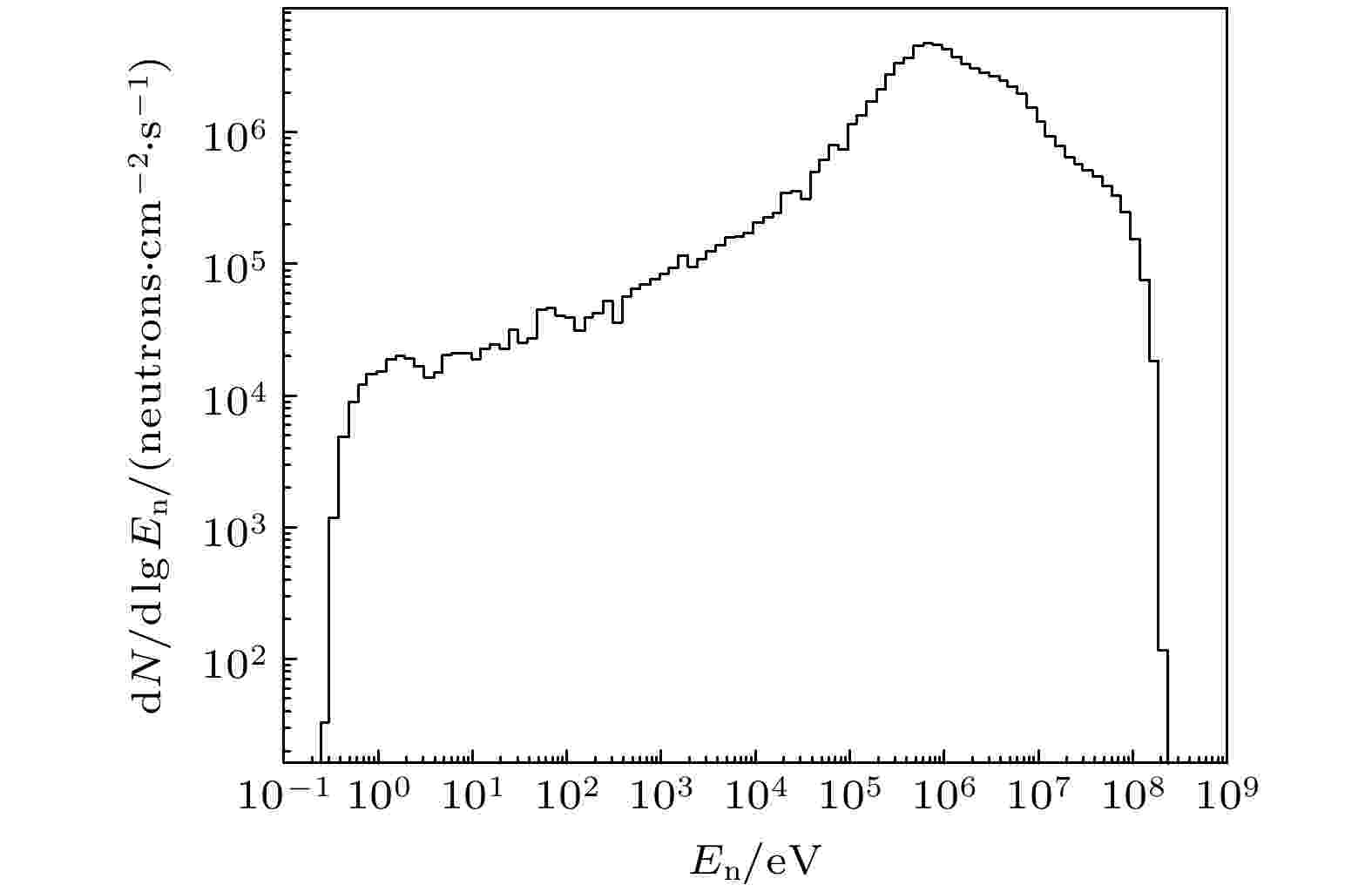
EDITOR'S SUGGESTION
2021, 70 (8): 082901.
doi: 10.7498/aps.70.20201823
Abstract +
At present, there exist few proton-beam terminals for the detector calibration in the world. Meanwhile, most of these terminals provide monoenergetic protons. Back-n white neutron source from China Spallation Neutron Source(CSNS) was put into operation in 2018. Based on the white neutron flux ranging from 0.5 eV to 200 MeV from the CSNS Back-n white neutron source, continuous-energy protons involved in a wide energy spectrum can be acquired from the 1H(n, el) reaction. Adopting this method, a new research platform for researches such as proton calibration is realized at CSNS. As hydrogen exists as gas at normal temperature and pressure, in the selecting of the proton-converting target, the hydrogen-rich compounds are preferential considered. Considering the reaction cross sections of the 1H(n, el), 12C(n, p)12B, 12C(n, d)11B, 12C(n, t)10B, 12C(n, 3He)10Be, 12C(n, α)9Be and 1H(n, γ)2H, polyethylene and polypropylene are suitable for serving as targets in this research. Based on a 3U PXIe, digitizers with 1 GSps sampling rate and 12 bit resolution are utilized to digitize and record the output signals of telescopes. The time and amplitude information of each signal are extracted from its recorded waveform. Proton fluxes can be calculated by using the neutron energy spectrum and the cross section of the 1H(n, el) reaction. Using the γ-flash event as the starting time of the time-of-flight (TOF) and the time information of signal in detector as the stopping time, the kinematic energy of each secondary proton can be deduced from the TOF and the angle of the detector. A calibration experiment on three charged particle telescopes, with each telescope consisting of a silicon detector and a CsI(Tl) detector, is carried out on this research platform. The readout methods of the CsI(Tl) detectors in these three telescopes are different. In the calibration experiment, ΔE-E two-dimensional spectra and amplitude-Ep two-dimensional spectra of these telescopes are obtained. Through comparing these particle identification spectra, the SiPM is chosen as the signal readout method for CsI(Tl) detectors in the charged particle telescopes. These researches provide experimental evidence for the construction of the charged particle telescope at Back-n, and also illustrate the feasibility of wide-energy spectrum proton calibration based on the Back-n white neutron source.
ATOMIC AND MOLECULAR PHYSICS
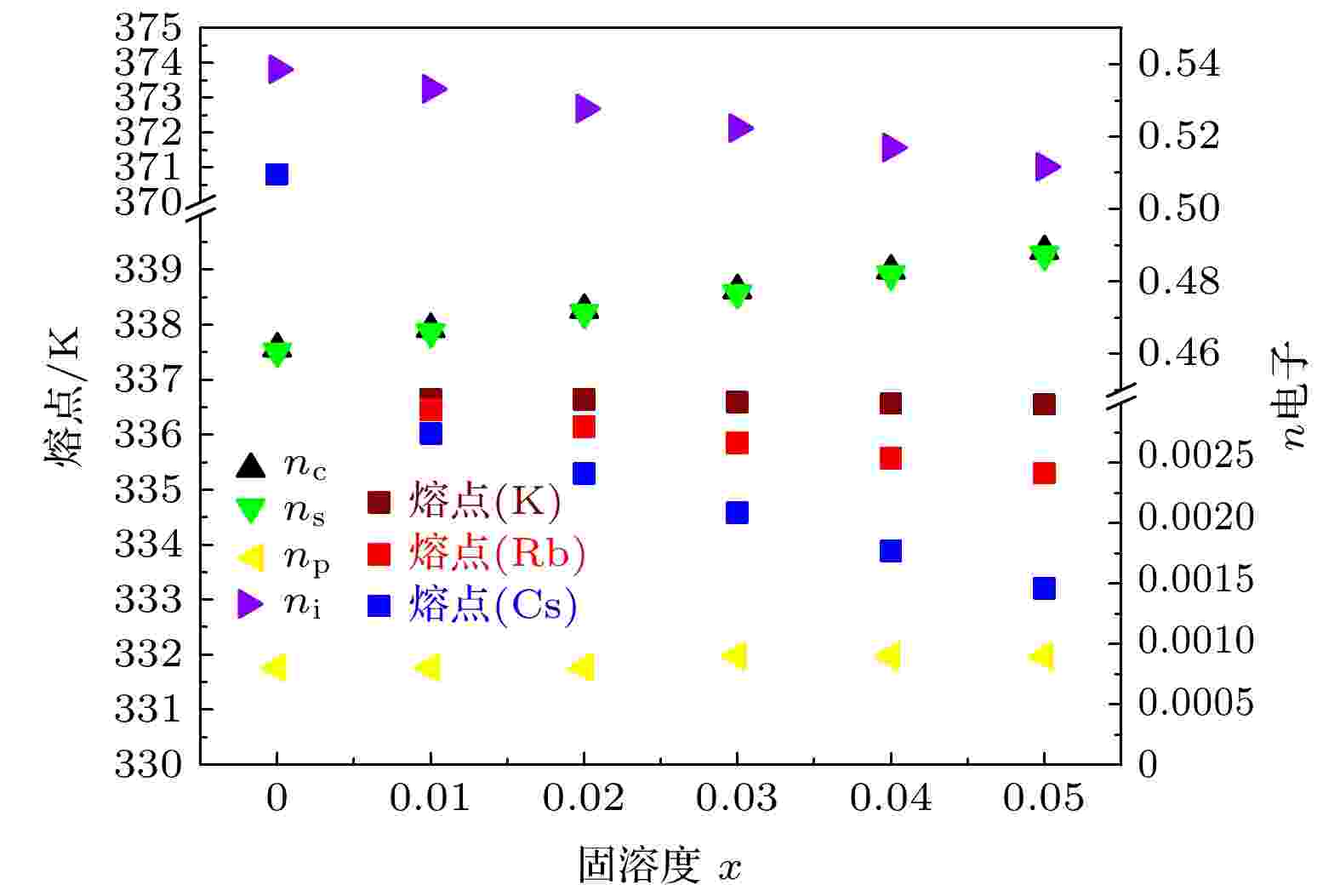
2021, 70 (8): 083101.
doi: 10.7498/aps.70.20201624
Abstract +
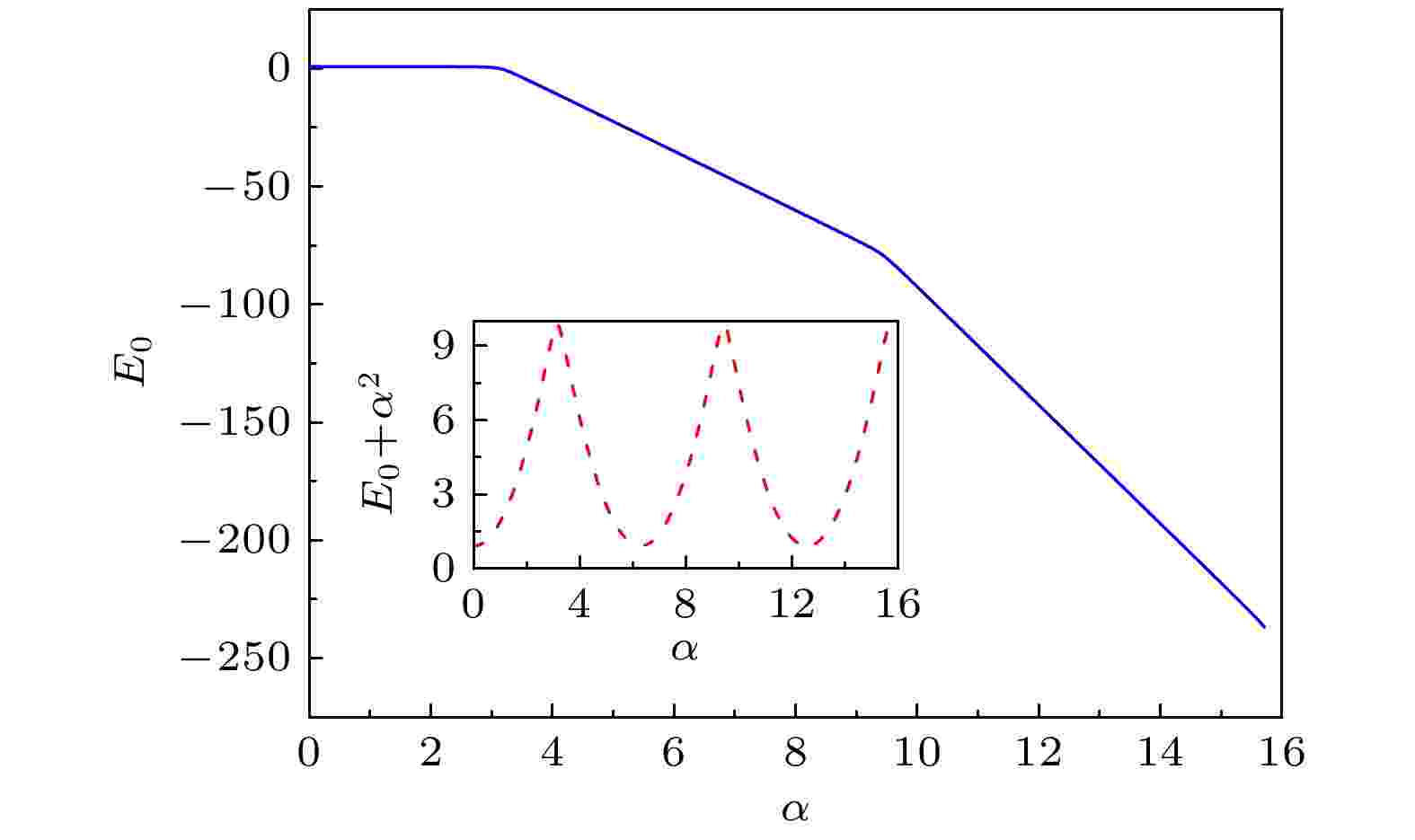
2021, 70 (8): 083401.
doi: 10.7498/aps.70.20201456
Abstract +
Experimental realization of artificial gauge field has made it possible to simulate important models with electromagnetic field or spin-orbit interaction in condensed matter physics, which opens a new avenue to engineer novel quantum states and phenomena. The spin-orbit coupled system reveals many significant phenomena in condensed matter physics, such as quantum spin Hall effect, topological insulator and topological superconductor. The combined effect of Zeeman interaction and spin-orbit coupling leads to a nontrivial topological phase. The analytic solution of few-body system provides an in-depth insight into the physical phenomena, which has been studied extensively. Through the analytic study of two-body physics, we show new quantum phenomena for various gauge field parameters. We investigate the two-body interacting fermionic gas with spin-orbit coupling and Zeeman interaction in a ring trap. Through the plane wave expansion method, two-body fermionic system is solved analytically. In the absence of Zeeman interaction, the total momentum of the ground state is zero. With the increase of Zeeman interaction, an energy level crossing occurs between the lowest energy levels for different total momentum spaces and the ground state changes from zero total momentum space to non-zero total momentum space. Considering the Zeeman interaction, the total momentum of the ground state changes from zero to finite value. The single particle analysis shows that the ground energy level transition is induced by Zeeman energy level splitting. The momentum distributions of the ground state are given to provide an intuitive physical picture. This work can be further extended to the exploration of the heteroatom system, lattice system and higher spin system.
ELECTROMAGNETISM, OPTICS, ACOUSTICS, HEAT TRANSFER, CLASSICAL MECHANICS, AND FLUID DYNAMICS
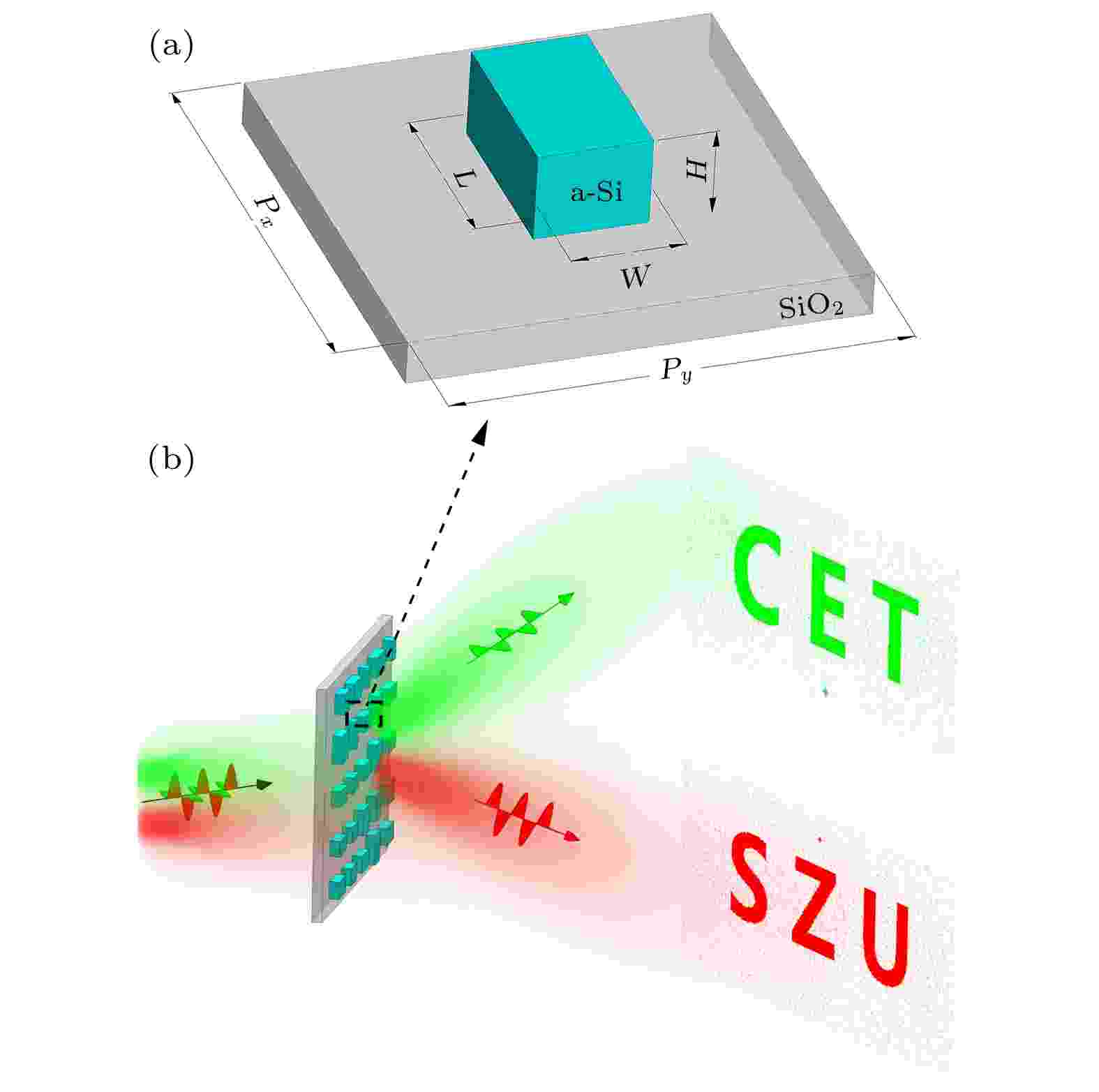
2021, 70 (8): 084201.
doi: 10.7498/aps.70.20201047
Abstract +
In this paper, we propose a new method to realize both polarization-multiplexing and wavelength-multiplexing using a simple structure, which can realize hologram by the multiplexing of double wavelengths and double polarization in the visible band. Our design can reduce color cross-talk and have a higher diffraction efficiency. We design a transmission metasurface composed of simple rectangular cells. Firstly, we establish the relationship of structural parameters with the transmission phase under various incident conditions of light beams. Then we propose a fitness function that can optimize the structural parameters of the unit cell at each pixel point, which can display different images by 532 nm x-polarization and 633 nm y-polarization incident light beams respectively. Finally, finite difference time domain method is used to analyze the structure, and the holographic result fits the theoretical design very well. This work proposes using single metasurface structure to solve the problems of wavelength cross-talk appearing when using simple structures, and will have great importance in coding and anti-counterfeiting.
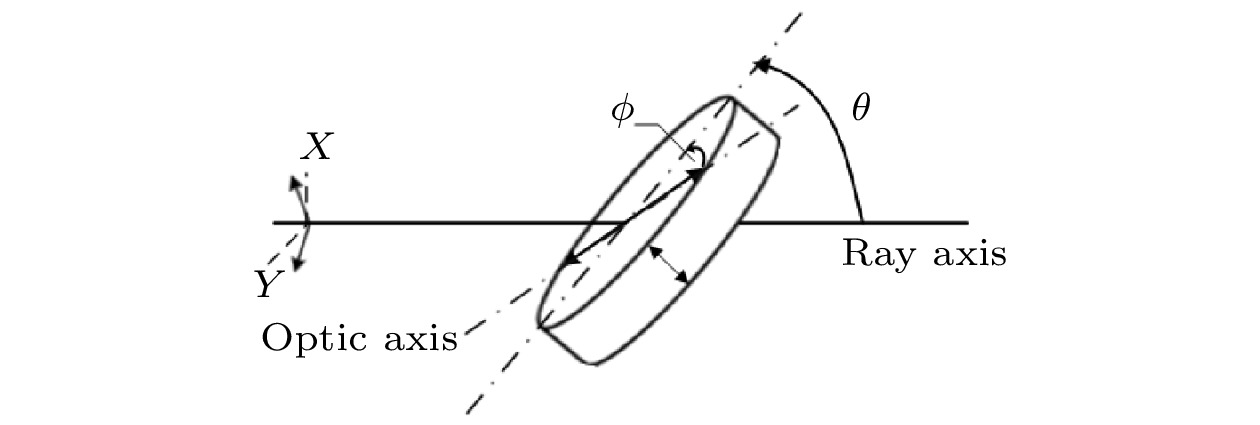
EDITOR'S SUGGESTION
2021, 70 (8): 084202.
doi: 10.7498/aps.70.20201719
Abstract +
In recent years, chirped pulse amplification (CPA) technology injects vitality into the development of ultra-strong and ultra-short lasers. However, in the CPA based gain media, the gain narrowing effect limits the higher output of ultrashort pulse in energy, power, signal-to-noise ratio. In order to compensate for the gain narrowing caused by the broadband amplification of Nb:glass in picosecond pewter laser system, a method of high-energy spectral shaping is proposed based on LiNbO3 birefringent crystal, and the spectral phase introduced by the crystal is analysed for the first time. Based on the strict Jones matrix, the transmittance function of birefringent crystal and the spectral phase introduced by the crystal are obtained. Further, three kinds of birefringent crystals are compared among each other, and the results show that the higher birefringence and the smaller thickness are required to achieve the same intensity modulation. For the laser pulse at 1053 nm, LiNbO3 is selected as the spectral shaping crystal due to its high birefringence, large diameter, and non-deliquescent. The influences of crystal thickness, tilt angle, and in-plane rotation angle on the spectral intensity modulation are simulated theoretically, and the results show the above parameters affect the modulation bandwidth, center wavelength, and modulation depth of the shaping. By analyzing the spectral phase introduced by the crystal, it is found that the dispersion of each order changes with the thickness of the crystal, the tilt angle, and the in-plane rotation angle, and it is the most sensitive to the change of thickness. In addition, by controlling the dispersion of each order, the influence on the pulse signal-to-noise ratio can be weakened during spectrum shaping. On the basis of theoretical analysis, the shaping experiment with a center wavelength of 1053 nm, modulation bandwidth of 10 nm, and modulation depth of 80% is carried out. And the phase introduced by the LiNbO3 is measured. The experimental results are consistent with the theoretical analysis. For the Shenguang Ⅱ high-energy petawatt laser system, by the above-mentioned shaping scheme, a high-energy broadband laser output of 1700 J and 6 nm (FWHM) is realized for the first time in China, which is 2 times that at 3.2 nm when it is not shaped. The research effectively compensates for the Nb:glass gain narrowing effect, and will provide references for the parameter design, material selection and spectral phase compensation in the birefringent spectral shaping.
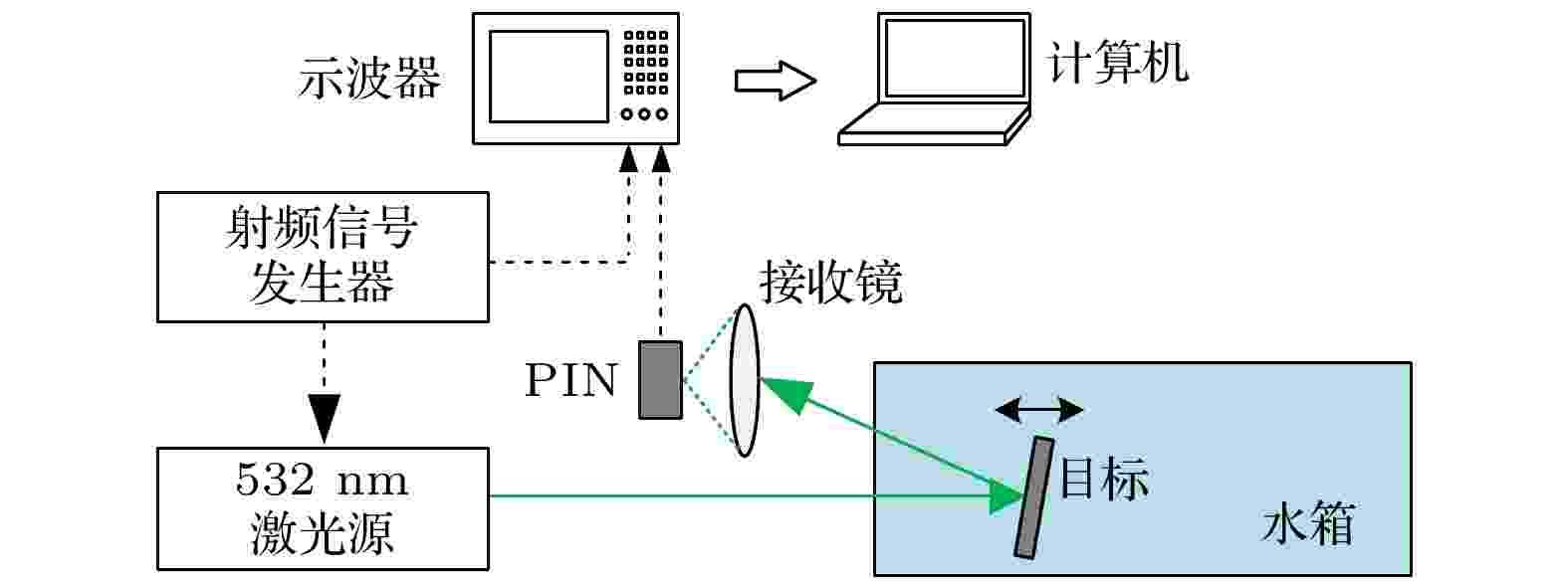
2021, 70 (8): 084203.
doi: 10.7498/aps.70.20201612
Abstract +

2021, 70 (8): 084204.
doi: 10.7498/aps.70.20201075
Abstract +
Optical fiber time delay system has been widely used in optical-controlled phased array antenna, radar distributed network, interferometric optical fiber hydrophone and high-speed photoelectric chip. These applications require high-accuracy and high-stability time delay generated by the system. Time delay measurement directly determines the precision and resolution of the system. Therefore, high-precision time delay measurement method is of great significance in developing the optical fiber delay system. In this paper, progress and problems of optical fiber time delay measurements are discussed. A new method of precisely measuring the time delay in optical fiber is proposed. We use the frequency domain reflectometry (FDR) to avoid the discrepancy between measuring range and measuring precision, which exists in both time-of-flight (TOF) method and phase discrimination approach. An intensity modulated 1064 nm laser signal is used as a light source. The modulation frequency is tuned from 10 MHz to 200 MHz in steps of 0.5 MHz. The spectrum of echo signal is obtained by measuring the amplitudes and phases of echo signals at different frequency points. The delay information is obtained via the inverse fast Fourier transform (IFFT). The precision of delay measurement in our method is determined by step size of frequency variation, and a higher-precision measurement is realized by using interpolation zero algorithm. Since our method is not to modulate the optical frequency, but to control the frequency of the modulation signal loaded on the electro-optic modulator, it is easy to achieve the high-precision and high-linearity frequency modulation. In this paper, theoretical analysis and time delay measurement are used to compare the FDR method with conventional TOF measurement method. The accurate measurement of 33–200 ps is realized, and measurement error is lower than 7 ps. We also design an incremental measurement experiment to study the resolution of the FDR method, which achieves a delay resolution of 3.3 ps. The influence of temperature jitter is analyzed to prove the reliability of experimental results. It proves that the FDR method has a higher measuring accuracy than the TOF method. The time delay measurement precision can be further improved by expanding the modulation bandwidth. Our method is to be applied to an optical fiber delay system to improve the precision and resolution of system delay.
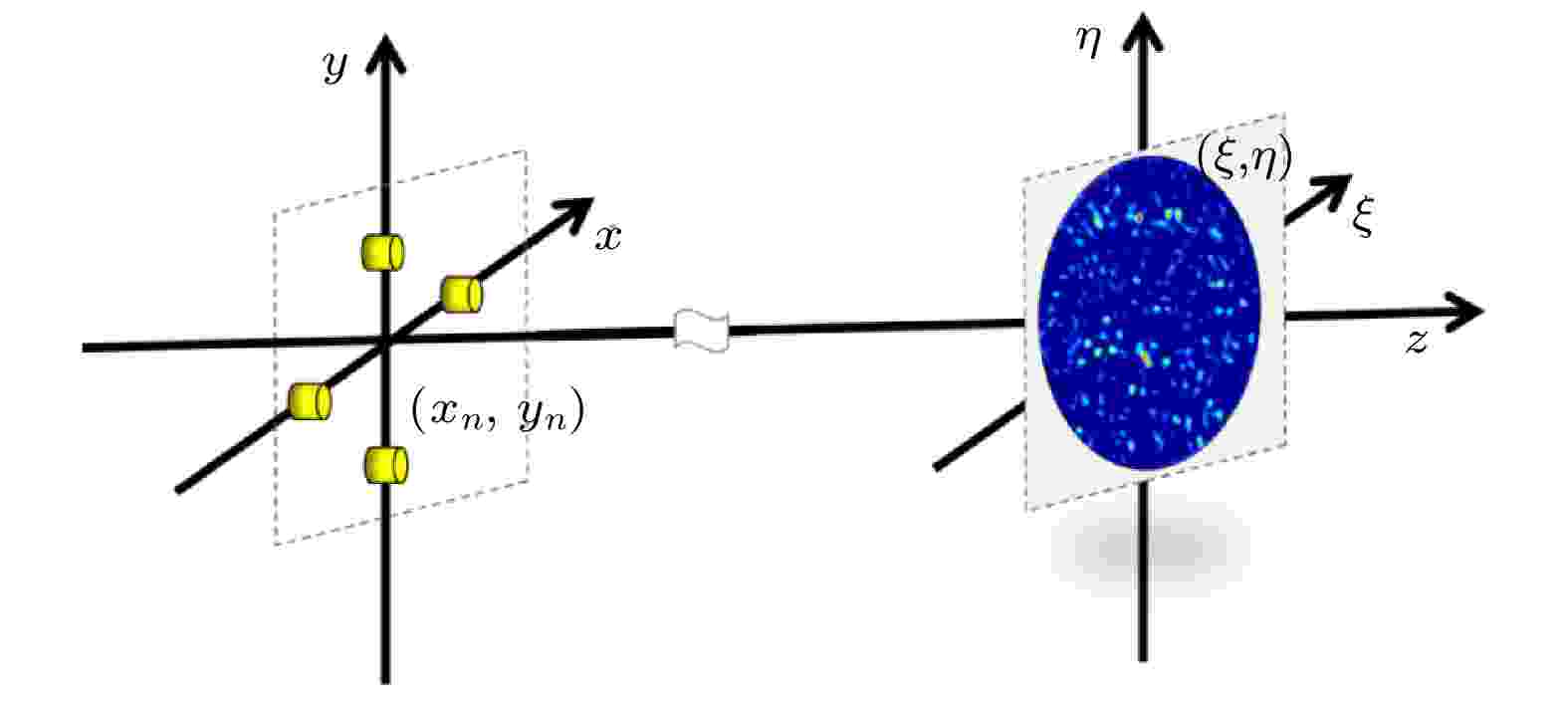
2021, 70 (8): 084205.
doi: 10.7498/aps.70.20201768
Abstract +
Optical fiber phased array can be used in high-power laser beam combination, lidar and other areas. The configuration of the optical fiber array is different from the microwave phased array, which has periodic problems that affect the energy intensity distribution of the main lobe. Starting from the physical model, in this paper we establish a theoretical model of optical phased array antenna array based on a set of concentric circular ring lattices, and propose a theory of the rapid synthesis of randomly configured interference field strengths through using analytical continuation method and Fourier transform method. The problem of sampling bandwidth and sampling number that should be paid attention to in the numerical simulation of discrete sampling are discussed, and the problem of quickly realizing the numerical simulation of multi-beam interference field is solved. Genetic algorithm and particle swarm algorithm for optimizing the configuration of optical phased array antennas are investigated with different populations. The convergence speeds and optimization efficiencies of the two algorithms are compared and analyzed. It is demonstrated that the peak side-lobe ratio PSR can be achieved to be better than 0.270 by the genetic algorithm optimized configuration array under the real fabricate parameter. The proposed method is expected to be used in the actual optical phased array antenna configuration to guide the optimal design of the antenna with low side lobes, and the proposed model is also expected to provide a certain reference value for the study of optimizing the non-differentiable objective function.
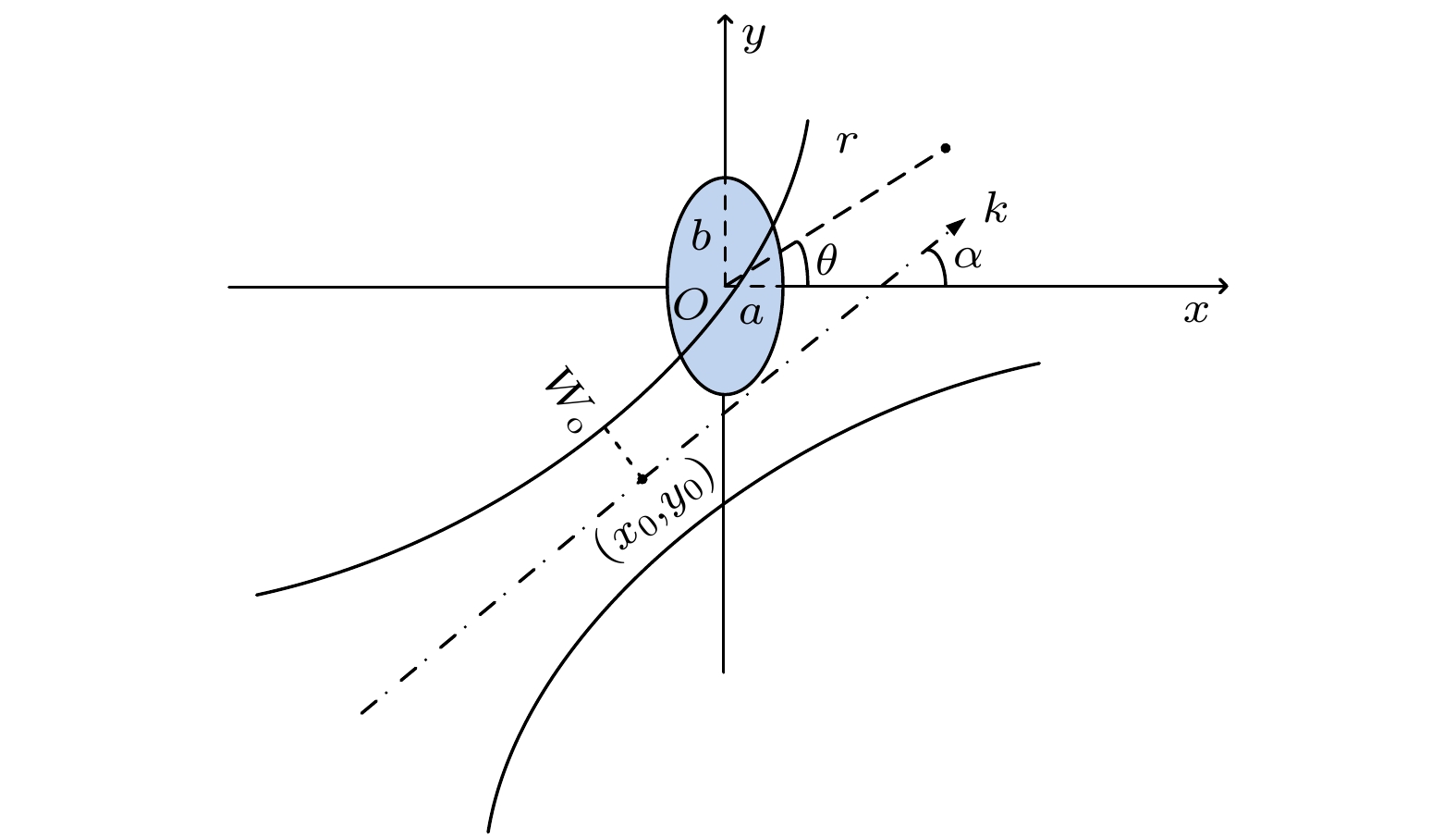
2021, 70 (8): 084301.
doi: 10.7498/aps.70.20201635
Abstract +
As one of the nonlinear effects of acoustic waves, the time-averaged acoustic radiation torque expression is derived from the transfer of angular momentum from the incident beam to the object. In recent years, the acoustic radiation torque has received substantial attention since it is the underlying principle of well-controlled particle rotations and spins, which provides a new degree of freedom in particle manipulation and acousto-fluidic applications in addition to the translational displacement caused by the acoustic radiation force. Cylindrical particles, such as fibers, carbon nanotubes and other surface acoustic wave devices, are commonly encountered in various applications. The acoustic scattering coefficients for an elliptical cylinder arbitrarily located at the field of Gauss beam in two-dimensions are computed based on the partial-wave series expansion method and the Graf’s additional theorem for cylindrical functions to obtain the off-axis beam shape coefficients. It is worth mentioning that both the rigid and non-rigid cylinders are considered in this work, which requires different boundary conditions at the cylinder surface. Moreover, the closed-form expression of the acoustic radiation torque in this case is derived. On this basis, several numerical simulations are performed with particular emphasis on the off-axis distance, the incident angle and the beam waist. The simulated results show that both the positive and negative acoustic radiation torque can exist under certain conditions, which means that 1) the elliptical cylinder can be rotated in either the clockwise or the counterclockwise direction, 2) rigid elliptical cylinders are more likely to experience a strong acoustic radiation torque than non-rigid elliptical cylinders at low frequencies, 3) the incident wave field with a specific frequency can excite a different resonance scattering mode for a non-rigid elliptical cylinder, therefore the acoustic radiation torque peak is more related to the beam frequency than to the elliptical cylinder’s location in the field, and 4) increasing the beam width can enlarge the scattering cross section area, and thus enhancing the acoustic radiation torque on the elliptical cylinder. The results in this study are expected to provide a theoretical guide for the controllable rotation of a particle and the viscosity inversion of fluid by using the acoustic radiation torque. The exact formalism presented here by using the multipole expansion method, which is valid for any frequency range, can be used to validate other approaches by using purely numerical methods.
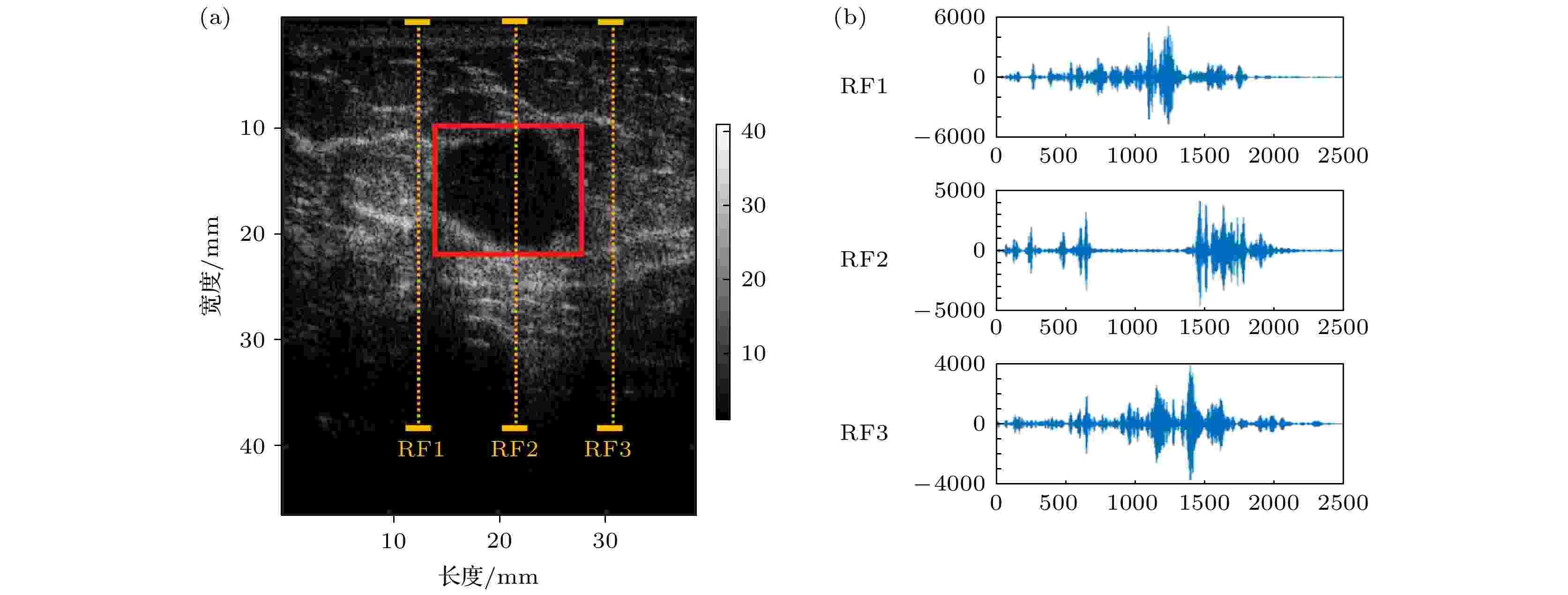
EDITOR'S SUGGESTION
2021, 70 (8): 084302.
doi: 10.7498/aps.70.20201919
Abstract +
In this paper the classification of benign and malignant breast masses is investigated by using the entropy of nonlinear ultrasound radio frequency (RF) signal. The parameters (entropy and weighted entropy) derived from the nonlinear ultrasound RF signal and the conventional ultrasound parameters (image grayscale, aspect ratio, irregularity, breast mass size, and depth) are extracted from 306 image samples (158 benign and 148 malignant); t-test and linear-discriminant classifier (LDC) are used to test the distinction between benign and malignant breast masses by each parameter; furthermore the effective parameters are combined to classify benign and malignant breast masses. The results show that except the image grayscale, the other parameters are significantly different between benign and malignant breast masses. Multi-parameter combined with support vector machine (SVM) is used to classify breast masses as benign and malignant. The accuracy is 81.4%, the sensitivity is 78.4%, and the specificity is 84.2%. The present work shows that the combination of the nonlinear entropy of ultrasound RF signal and traditional ultrasound parameters can more effectively characterize the benign and malignant breast masses. The entropy of nonlinear ultrasound RF signal can become a new parameter for characterizing the benign and malignant breast masses.
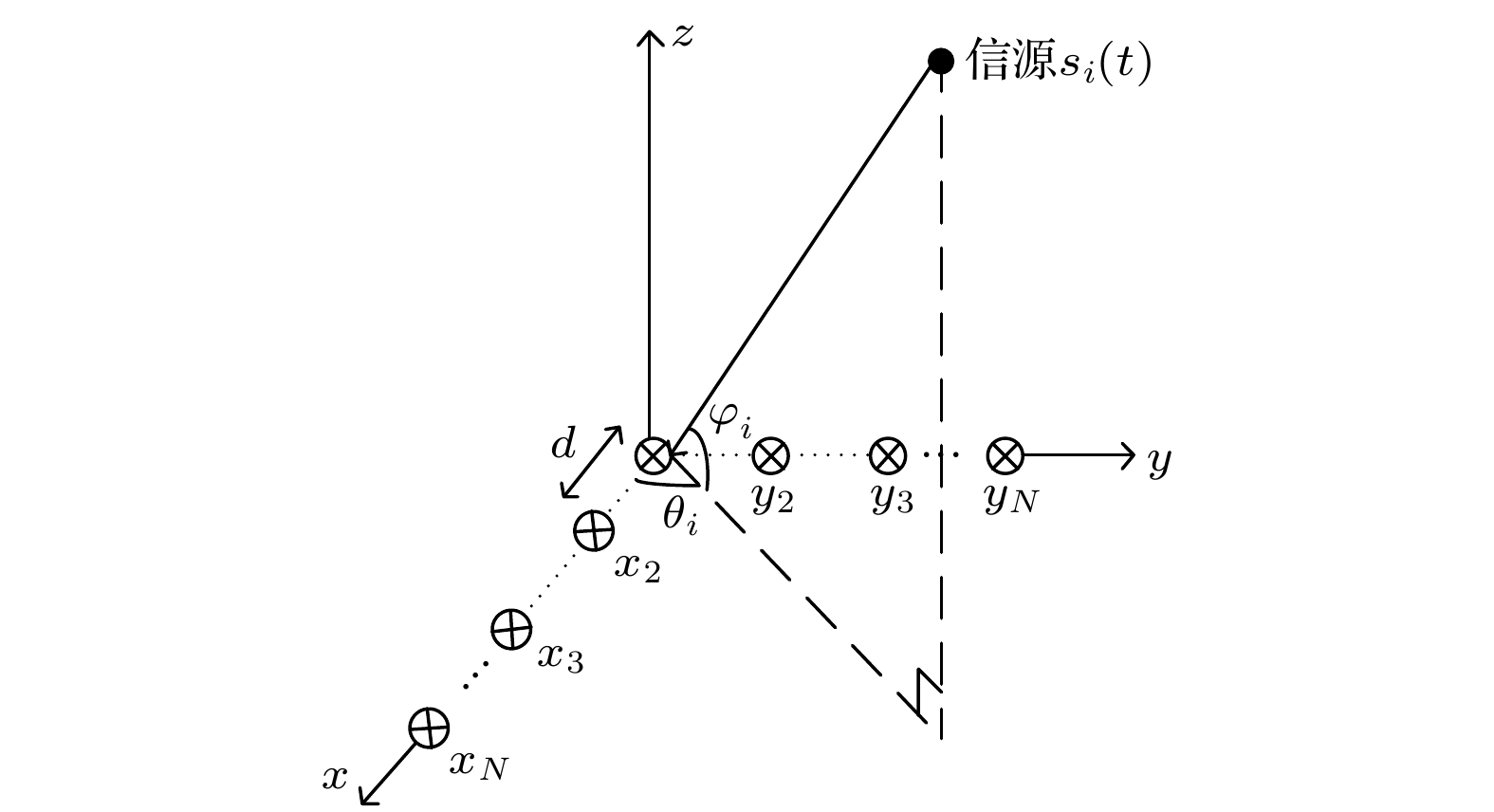
2021, 70 (8): 084303.
doi: 10.7498/aps.70.20201312
Abstract +
As the signal spectrum in modern information technology becomes wider and wider, multi-band signals are distributed in a frequency range of tens of GHz. It covers a very wide spectrum but each RF signal has a very narrow band, and the distribution location of the band (or carrier frequency) is completely unknown. For the receiver, the single-band signals transmitted together constitute a multi-band signal. The sampling rate required to jointly estimate the space domain and frequency domain parameters of these signals is getting higher and higher. Modulated wideband converter system is an analog information conversion system for multiband analog signals, which is based on compressed sensing theory and greatly reduces the sampling rate. First, we propose an L-shaped delay array structure based on modulated wideband converter, which can estimate carrier frequency and two-dimensional arrival angles with a small number of samples. Secondly, two parameter-estimating algorithms are proposed based on the proposed structure. One is based on the estimating of signal parameter via rotational invariance technique (ESPRIT), which requires a small number of computations and is suitable for real-time processing application scenarios; the other algorithm is based on CANDECOMP/PARAFAC (CP) technique, which has better robustness and is suitable for applications with low signal-to-noise ratio. The samples of the delay channels can be directly used to estimate the carrier frequencies, and then the two-dimensional arrival angles are calculated. No additional pairing issue is required between the parameters. Then we give the time complexity analysis and space complexity analysis of the two methods. It can be found that the computational complexity and space storage occupation of the method based on ESPRIT are lower than those of the CP decomposition method. Then the conditions for unique parameter estimation are given. Finally, simulation experiments show that the proposed methods can estimate the carrier frequencies and two-dimensional arrival angles from sub-Nyquist samples. It can be found that the estimation method based on CP decomposition is more robust than the method based on ESPRIT, but at the cost of increased complexity of the algorithm.
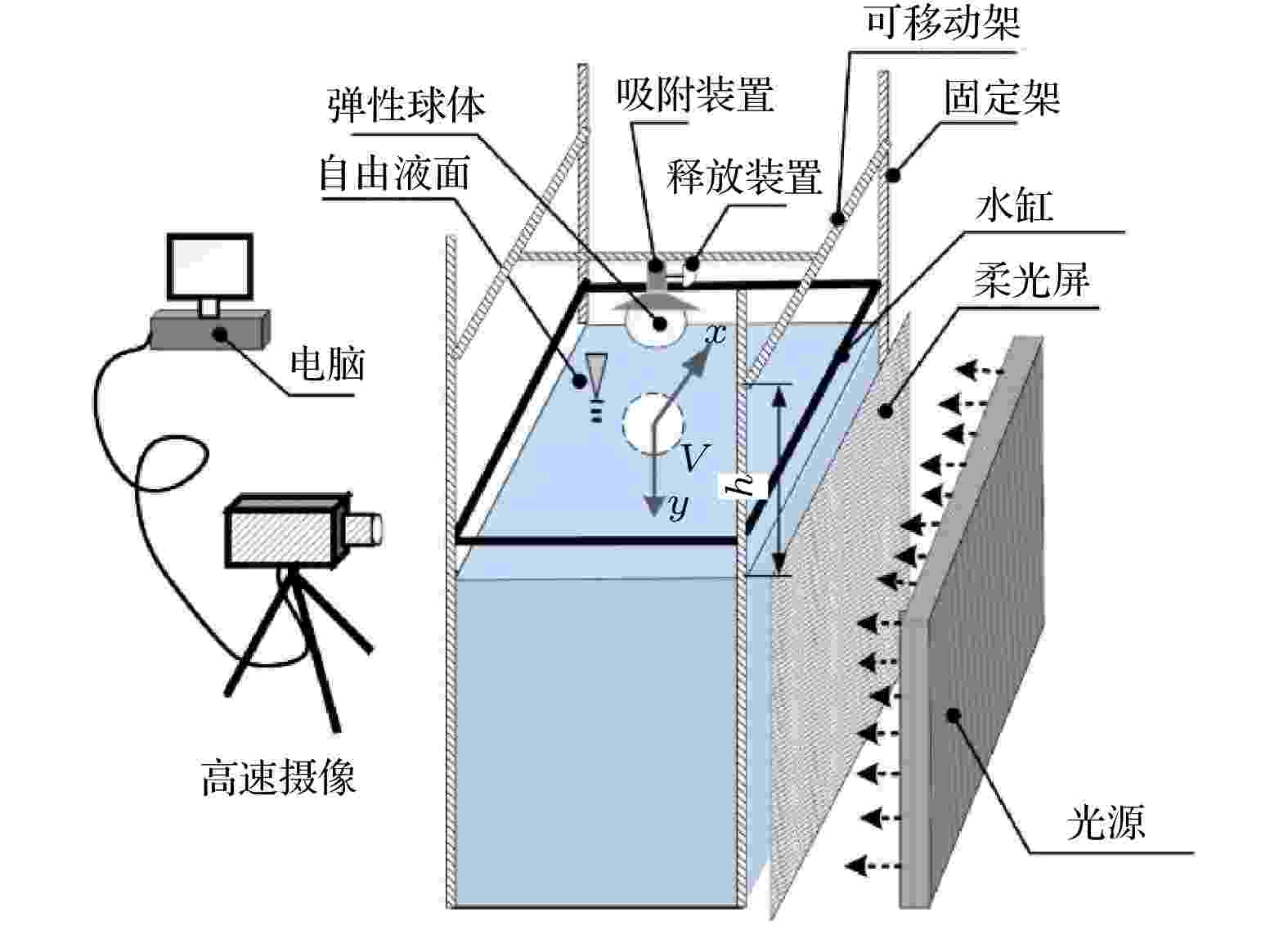
EDITOR'S SUGGESTION
2021, 70 (8): 084701.
doi: 10.7498/aps.70.20201738
Abstract +
Hyperelastic materials, which have strong nonlinear mechanical properties, are commonly used in the engineering field. The application of hyperelastic materials to the water entry problem is a new interdisciplinary research topic. Unlike the water entering into a traditional rigid sphere, the hyperelastic sphere is very easy to deform during water entry. In order to explore the fluid-structure coupling problem with large deformations during water entry, a high-speed camera is used to study the problem of vertical water entering into hyperelastic sphere in this paper. Based on the experimental results, the effects of the material properties and impacting conditions on the cavity flow and sphere deformation behaviors during water entry are compared and analyzed. The experimental results show that the formation of the nested cavity after impacting a free surface of the hyperelastic sphere needs large enough impact conditions and small material shear modulus. The time for the nested cavity to be formed and retained during water entry is related to the material shear modulus and sphere diameter. The sphere displacement and length of cavity formed by the hyperelastic sphere increase with the increase of the impact velocity and material shear modulus, but decrease with the increase of the diameter of the sphere. The increase of the impacting velocity can only aggravate the deformation behaviors of the hyperelastic sphere, but does not affect the formation moment of the nested cavity. In addition, the characteristics for the deformation behaviors of the hyperelastic sphere to vary with the Froude number and the dimensionless ratio of material shear modulus to impacting hydrodynamic pressure are described and studied.
PHYSICS OF GASES, PLASMAS, AND ELECTRIC DISCHARGES
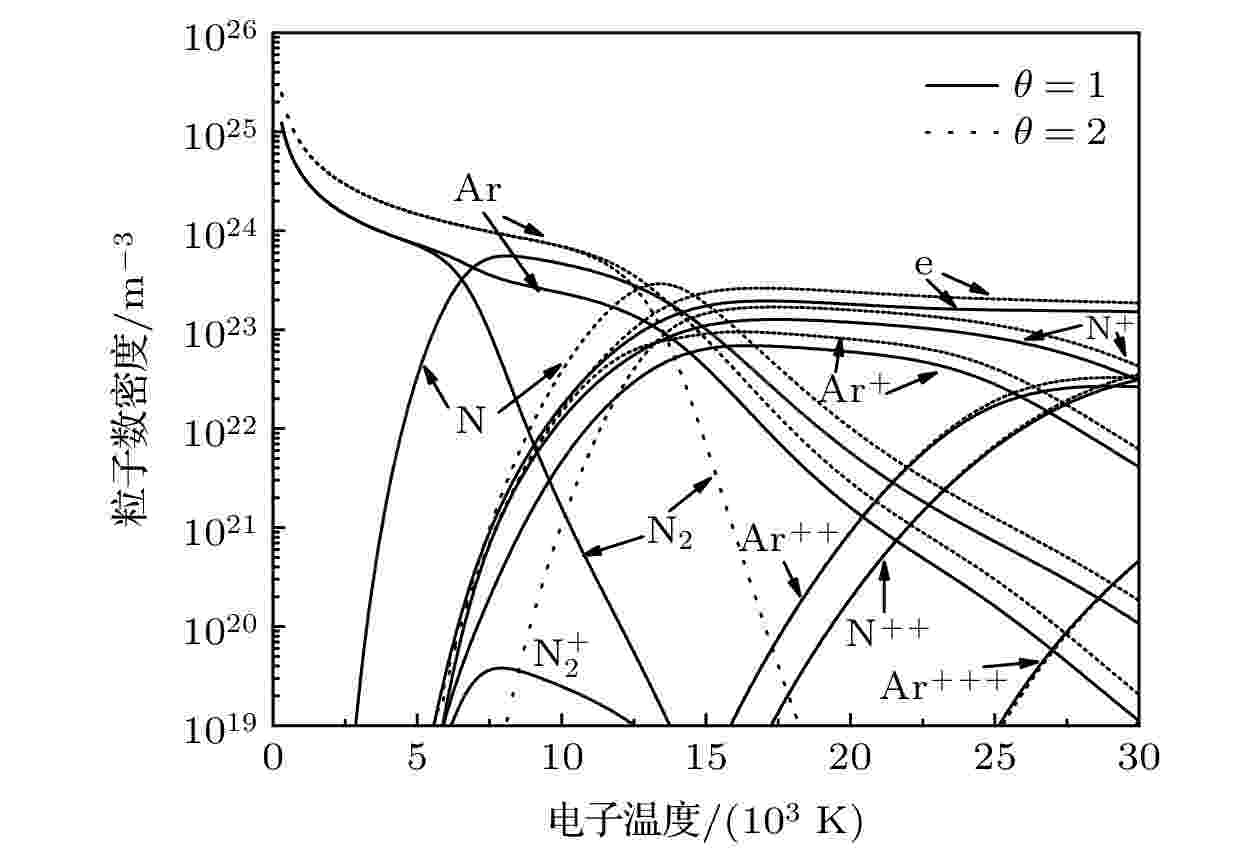
2021, 70 (8): 085201.
doi: 10.7498/aps.70.20202040
Abstract +
The thermodynamic and transport properties of plasmas over a wide range of temperature and pressure are necessary to model the heat transfer and flow processes in plasma. In this study, the plasma composition is solved by simultaneous Saha equation, Dalton's partial pressure law and charge quasi-neutral equation. The thermodynamic properties of plasma computation are based on the kinetic theory for ideal gas. While the calculation of transport properties is based on the solution of Boltzmann’s equation by the Chapman-Enskog method. The thermodynamic and transport properties of argon-nitrogen plasma at pressures of 0.1, 1.0 and 10.0 atm, electron temperatures ranging from 300 to 30000 K, and non-local thermodynamic equilibrium (NLTE), where the electron temperature is not equal to the temperature of heavy particles,, are investigated by using the above method. The results show that the value of non-equilibrium parameter has a great influence on the properties of the argon-nitrogen mixture. With the increase of non-equilibrium parameter, the dissociation reaction requires a higher electron temperature, which leads the dissociation peak to shift to a higher electron temperature. The ionization and dissociation reaction will enter into the high temperature region due to the increase in pressure. This change will affect the peak position and value of the specific heat, viscosity, thermal conductivity and electrical conductivity of plasma. In addition, since the electronic translational thermal conductivity and electrical conductivity mainly depend on the electron number density, when non-equilibrium parameter and pressure increase, the electron number density will increase at high electron temperature, thus improving the electronic translational thermal conductivity and electrical conductivity. Under the condition of local thermodynamic equilibrium, the transport properties of argon-nitrogen plasma obtained by calculation are in good agreement with previously reported data.
CONDENSED MATTER: STRUCTURAL, MECHANICAL, AND THERMAL PROPERTIES

2021, 70 (8): 086201.
doi: 10.7498/aps.70.20201943
Abstract +
Due to the outstanding mechanical and electronic properties, graphene has been widely investigated as the nano-filler for fabricating metallic matrix composites. The key point in these studies is how to realize a uniform distribution of graphene in the metallic powders. The traditional methods mainly include ball-milling and colloidal processing. However, both of them result in massive structural defects on graphene flakes and further degrade its strengthening effects. Therefore, it is meaningful to explore a new method. In this study, we present a new way, i.e. in-situ growth of graphene on copper powders in the plasma enhanced chemical vapor deposition system (PECVD). The scanning electron microscope(SEM) images indicate that the powder is fully covered by graphene nanoflakes, realizing uniform mixing on a micro-scale. Further research finds that there exists a competition between growth and etching at the initial stage of the graphene growth. Methane is dissociated into various active species (CHx, atomic H and C) by the radio frequency. The C atoms self-assemble into graphene islands, yet the H atoms tend to etch these islands away. At a lower temperature, the etching effect takes a dominant position and then only the bigger islands are able to survive in this process, resulting in bigger graphene nanoflakes. As a contrast, it is a growth-dominant process at higher temperature, resulting in a much higher nucleation density and smaller graphene sheets. Therefore, the size of graphene sheets can be well controlled by tuning the growth temperature, for example, the sizes are 300 and 100 nm at 500 ℃ and 600 ℃ respectively. Moreover, the X-ray photoelectron spectroscopy(XPS) spectra show that the oxide layer at the surface of copper powder can be removed as the graphene flakes grow, which contributes to a fine interface between the two parts and further leads to outstanding performance of the final composite. The powder is consolidated by spark plasma sintering(SPS) technique, and several properties of this composite are tested. The results indicate that compared with the pure copper, the copper with the addition of graphene can reduce the resistivity by one order of magnitude and increase the hardness and yield strength by 15.6% and 28.8%, respectively. This work provides an alternative way to fabricate graphene-enforced composite and shows promising application prospects.
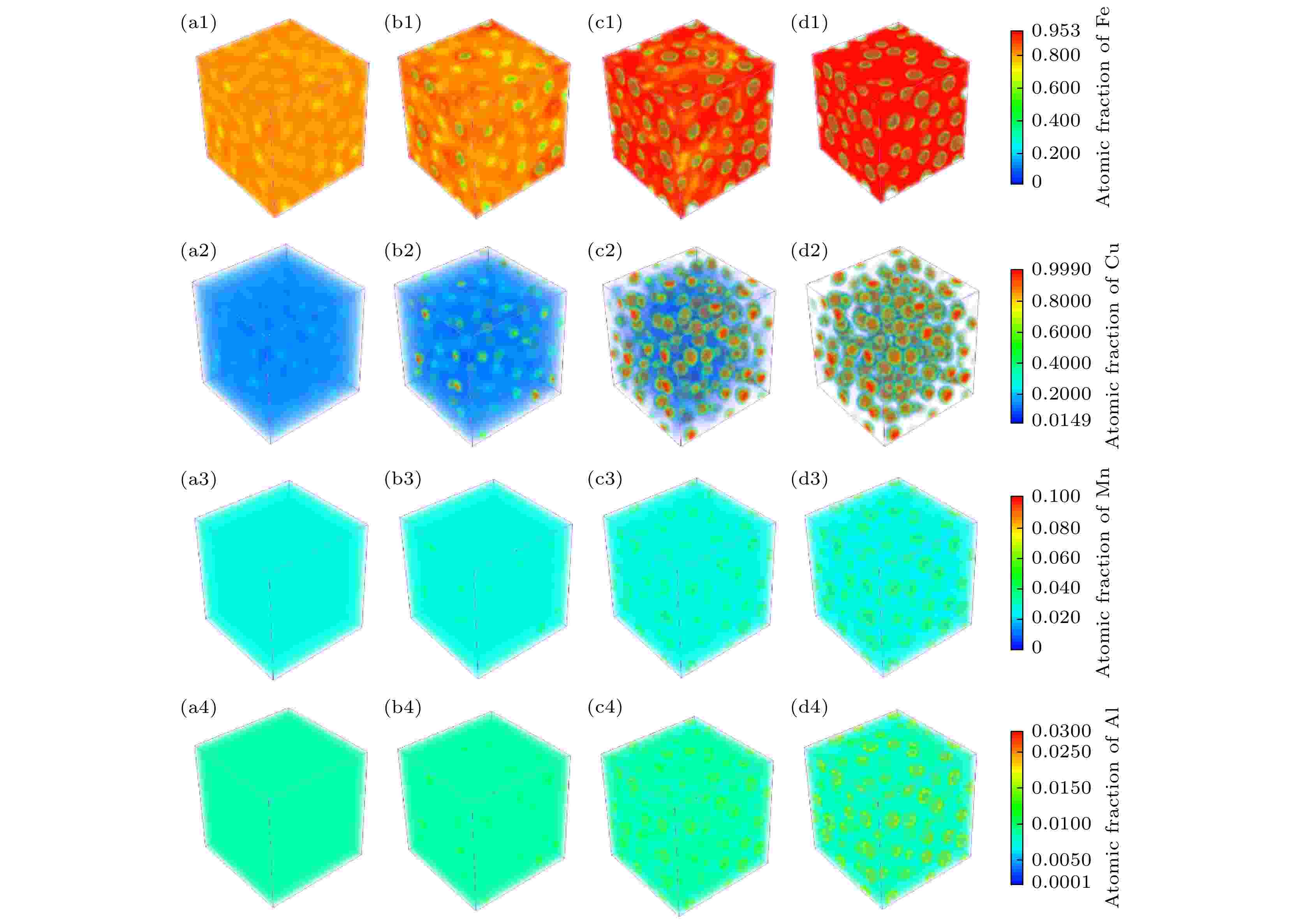
2021, 70 (8): 086401.
doi: 10.7498/aps.70.20201843
Abstract +
Low carbon steel plays an important role in many applications due to its high strength. Its high strength comes from the strengthening effect of nano-Cu-rich phase precipitates. In order to effectively adjust the microstructure of Cu-rich phase precipitates and obtain Fe-Cu-based steel with the best properties by adding different alloying elements (Mn, Al), it is necessary to understand the precipitation process of Cu particles. In this paper, based on the Ginzburg-Landau theory, the previous phase field model is modified, and the continuous phase field method is used to simulate the precipitation mechanism of nanometer Cu-rich precipitates and the inhibiting of the effect of Al content on Cu-rich precipitates of Fe-15%Cu-3%Mn-xAl (x = 1%, 3%, 5% mass fraction) alloy at 873 K isothermal aging. Combining with the free energy derived from thermodynamics database, the microstructure evolution corresponds to the real alloy system. By calculating the composition field variables and structural order parameters, the evolution of phase separation and precipitated phase morphology in aging process are simulated. Moreover, the influence law of morphology, quantity density, average particle radius, growth and coarsening of Cu-rich precipitated phase are discussed. The results show that in the early stage of aging process, the nano-Cu-rich phase precipitates through the spinodal decomposition mechanism, and is randomly distributed in the iron matrix. Furthermore, due to the difference in atomic diffusion rate, the core-shell structure with Cu-rich phase as a core is formed. With the aging time extending, the structure of Cu-rich phase precipitates changes from bcc to fcc. Because of the synergistic effect between Al and Cu, the diffusion of Cu is slowed down. Besides, with the Al and Mn atoms precipitating, Al/Mn clusters are segregated around the Cu-rich precipitates, forming the Al/Mn intermetallic core-shell structure, and gradually wrapping the Cu-rich phase uniformly. During the evolution of the precipitation stage, the Al/Mn clusters are isolated around the Cu-rich precipitation phase, forming a gradually uniform Al/Mn intermetallic phase core shell structure covering the Cu-rich phase, which is to hinder the buffer layer from forming in the precipitation stage of the reservoir. In addition, with the Al content increasing, the Al/Mn intermetallic phase promotes the growth of the buffer layer and hinders the Cu-rich precipitate phase from growing and coarsening.
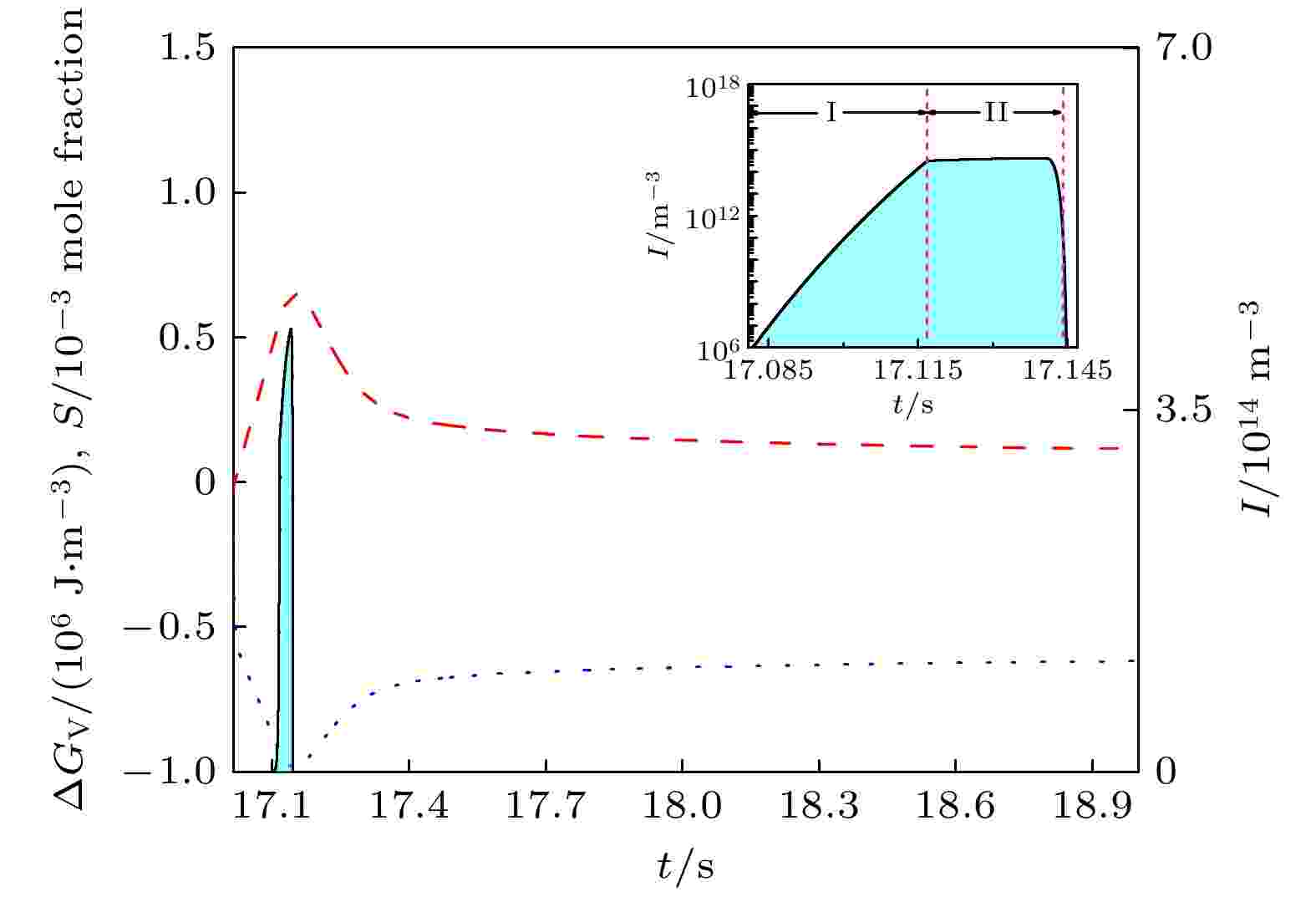
2021, 70 (8): 086402.
doi: 10.7498/aps.70.20201431
Abstract +
Solidification microstructure of aluminum alloy has a great influence on the properties of the casting. An aluminum alloy with the structure of fine equiaxed grains has low casting defects and presents excellent mechanical properties. Recently, chemical inoculation by adding grain refiner is the technique most extensively used to achieve a fine, equiaxed grain structure of Al alloy in the industrial production. In order to investigate the detailed solidification microstructure evolution of the alloy, many numerical models have been proposed. Cellular automaton method is one of the powerful tools for simulating the morphology evolution of detailed grains in the solidification process of alloy. However, the present cellular automata model has a shortcoming, that is, its calculation of the nucleation rate is based on the experimental number density of grains. In this work, a population dynamics-cellular automaton model is developed for describing the solidification microstructure evolution of the inoculated aluminum alloy. The model takes account of the heterogeneous nucleation of α-Al nucleus, the initial spherical growth of α-Al grains and the dendritic growth process. The model is used for simulating the solidification microstructure evolution of the commercial-purity aluminum (CP-Al) inoculated by Al-5Ti-1B master alloy. The results indicate that the heterogeneous nucleation process of α-Al can be divided into the two stages. In the early stage of nucleation, there are enough effective particles in the melt. The nucleation rate of α-Al increases with the increase of the undercooling of the melt. After a short time, the nucleation of α-Al is dominated by the number density of the effective particles in the melt. Nucleation process stops when the recalescence takes place. The effects of the additive amount of Al-5Ti-1B master alloy and the cooling rate of the melt on the solidification microstructure of the CP-Al are investigated by using the established model. The final solidification structures of CP-Al are predicted. And a comparison between the predicted results and the experimental ones shows that they are in good agreement with each other.
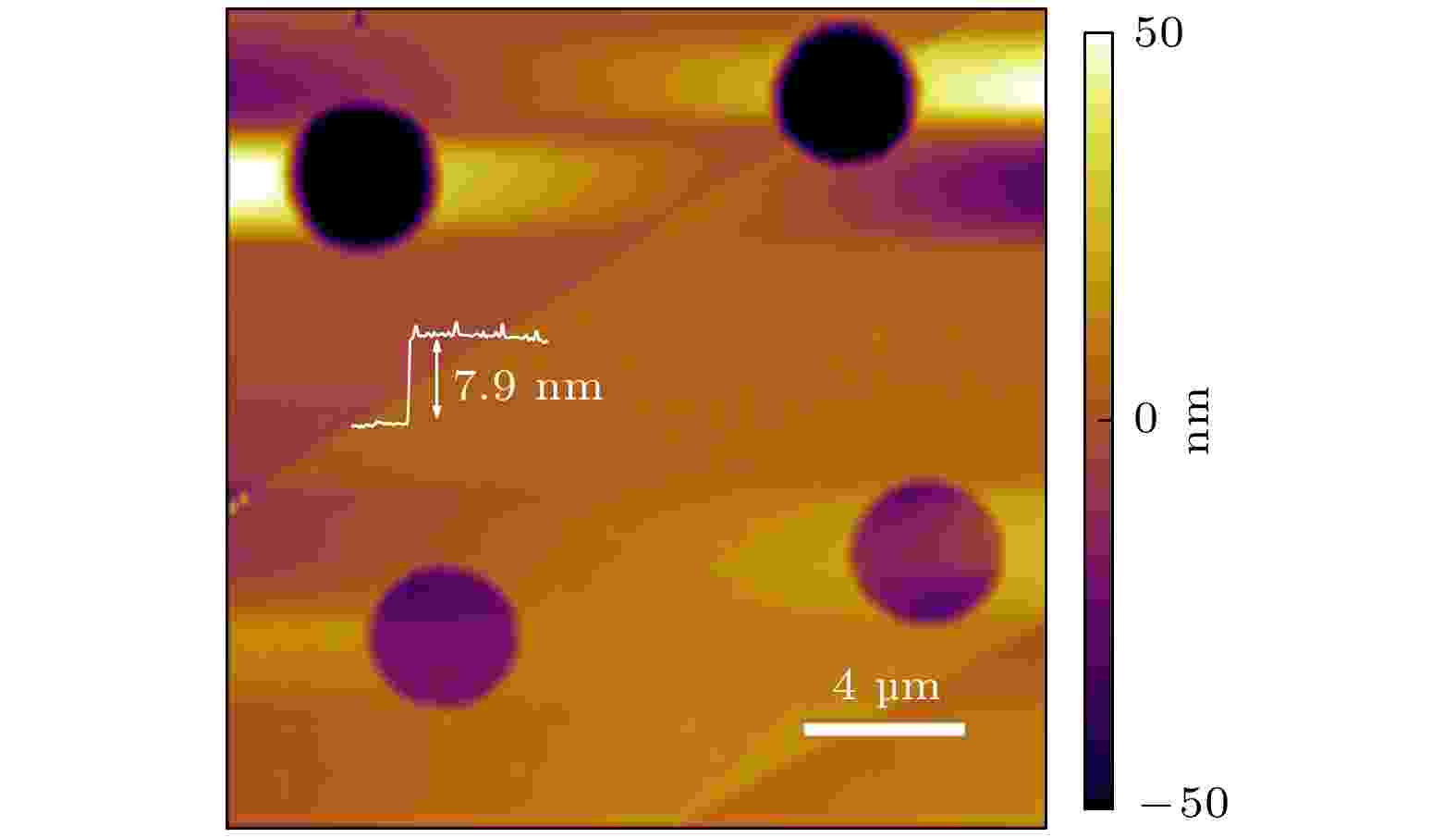
2021, 70 (8): 086801.
doi: 10.7498/aps.70.20201796
Abstract +
Minimizing friction is a goal that has long been pursued in history. The role of micro-electromechanical system and nano-electromechanical system (MEMS/NEMS) in electronic devices is becoming more and more important. Due to the increasingly small size of the device, large surface-to-volume ratio leads to severe friction and wear problems of the device, thus limiting its performance. Graphene is considered as a good lubricating material in MEMS/NEMS due to its extremely thin size and excellent anti-friction effect. The study of nano-friction properties of graphene is of great significance in further developing the MEMS/NEMS. In this work, microporous arrays are prepared on a SiO2/Si substrate, and graphene is stripped on the micropores to form a suspension structure. The friction properties of suspended graphene and supported graphene are measured by using atomic force microscope. The results show that the nanofriction on suspended graphene is significantly reduced compared with that on supported graphene. The supported graphene experiences a frictional enhancement effect because of the puckering effect, while the friction enhancing effect disappears in the suspended graphene. With the increase of graphene thickness, the out-of-plane stiffness increases gradually, and the friction difference between suspended graphene and supported graphene decreases gradually. In addition, the nanofriction properties of suspended graphene under new tip and pretreated tip are also different. The friction between the pretreated tip and graphene is significantly higher than that between the new tip and graphene. The surface friction difference between the suspended graphene and the supported graphene decreases when the pretreated tip is used compared with the new tip. This work demonstrates that the deformability of atomic-scale structures can provide an additional channel of regulating the friction of contact interfaces. By comparing the changes of surface friction between the suspended graphene and the supported graphene with different thickness and tip sizes, the influence of out-of-surface deformation on the friction of graphene is revealed, thus providing theoretical guidance for effectively improving the friction performance of graphene solid lubricant.
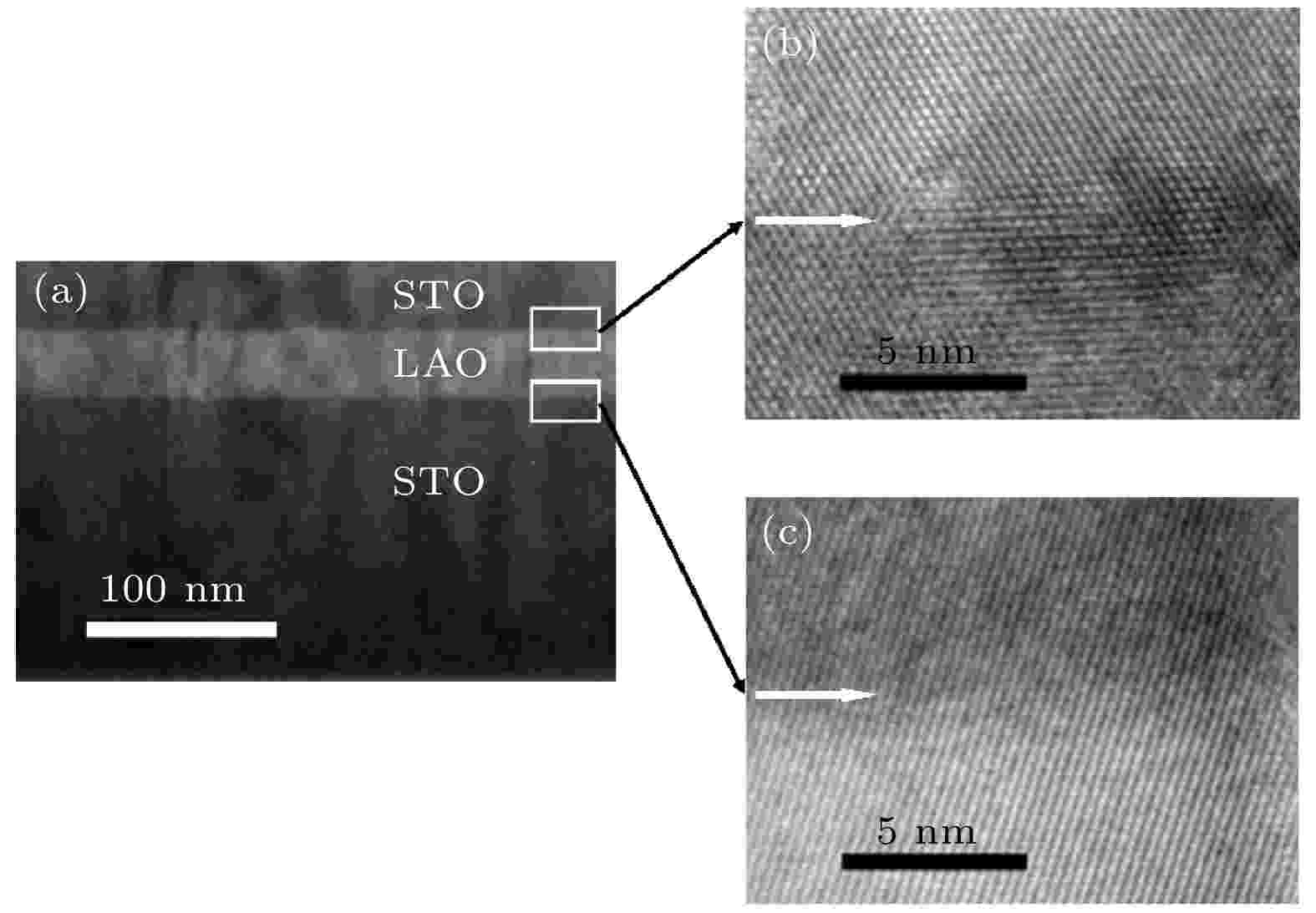
EDITOR'S SUGGESTION
2021, 70 (8): 086802.
doi: 10.7498/aps.70.20201330
Abstract +
Since high-mobility electron gas, which is also called two-dimensional electron gas, was discovered at the LaAlO3/SrTiO3 (LAO/STO) interface, SrTiO3-based heterostructures and nanostructures have become an attractive platform for novel nanoelectronic devices. Exploring the novel physical properties of LAO/STO interface and the mechanisms of interface effect is the key to designing and fabricating the new photoelectric devices. The LAO/STO sample is prepared on an STO (001) substrate by pulsed laser deposition. In order to study the influence of interface effect on photovoltaic effect in the LAO/STO sample, a KrF pulse laser with a wavelength of 248 nm and an energy density of 50 mJ/cm2 is chosen as an ultraviolet light source, a sampling oscilloscope of 350 MHz is used to measure the photovoltages, and a precision adjustable slit is adopted to control the size of irradiation area. The photovoltaic effect is studied under the condition of applied electric field at ambient temperature. The experimental results prove that the photovolatge of irradiating on the side of sample (LAO/STO interface) is higher than on the front of sample (film surface) under the same area of irradiation. Lateral photovoltaic effect is discovered in the LAO/STO sample. Irradiating on the side of sample (LAO/STO interface) can further improve the lateral photovoltaic effect in the LAO/STO sample. The open-circuit photovoltage depends linearly on the illuminated position, and the sensitivity reaches 36.8 mV/mm. The sensitivity of the lateral photovoltaic effect can be modified by the bias voltage. The experimental results not only contributes to better understanding the interface effect in LAO/STO interface, but also provides a basis for designing and using photoelectric devices for position-sensitive detection.
CONDENSED MATTER: ELECTRONIC STRUCTURE, ELECTRICAL, MAGNETIC, AND OPTICAL PROPERTIES

2021, 70 (8): 087101.
doi: 10.7498/aps.70.20201572
Abstract +
In this work, the geometrical configuration, electronic structure, optical properties and charge transfer behavior of BiOBr{001} surface with three different atomic exposure terminations (-BiO, -1Br and -2Br) and single-atom Pt at different adsorption positions on the BiOBr{001}-BiO surface (top, bridge and hollow site) are calculated by the first-principles calculation method based on density functional theory (DFT). More emphasis is placed on the research of the relative rule between single-atom Pt and BiOBr{001} surface. The calculation results show that the BiOBr{001}-BiO system exhibits the appearance of surface energy levels and the shift towards the lower energy for valence band and conduction band, enhancing the photocatalytic oxidation performance, especially, the existence of surface energy levels below the conduction band will contribute to the separation and migration of electron-hole pairs and the significant improvement of photo-response capability. Besides, the work function of BiOBr{001}-BiO system is much lower than one of noble metal Pt, which is beneficial to the directional transfer of photogenerated charge. Therefore, the BiOBr{001}-BiO system should be selected as an ideal substrate for interaction with the noble metal Pt. Furthermore, single-atom Pt is adsorbed at different positions of BiOBr{001}-BiO surface, with induced impurity energy levels in the forbidden band, achieving the smallest adsorption energy, the best photo-response capability. Particularly, the transferred charge number is the largest value (–0.920e) when Pt atom is adsorbed on a hollow site. However, the open electron-poor region will be formed when Pt atom is adsorbed at the top and bridge sites of BiOBr{001}-BiO surface. What is more, our findings should provide the excellent theoretical guidance for achieving the photocatalytic CO2 reduction and nitrogen fixation on the BiOBr{001} surface to build up the top and bridge sites as the adsorption sites of Pt atom. The adsorption sites of Pt atoms are located at the hollow sites of BiOBr{001} surface, which should obtain the high photocatalytic oxidizing activity of degrading organic pollutants. Finally, our work can not only present the basic data for the optimized local electronic structure and photocatalytic application for noble metal decorated BiOBr-based materials, but also provide a kind of research strategy for further exploring and designing efficient noble metal decorated BiOX-based or other semiconductor-based photocatalyst systems.
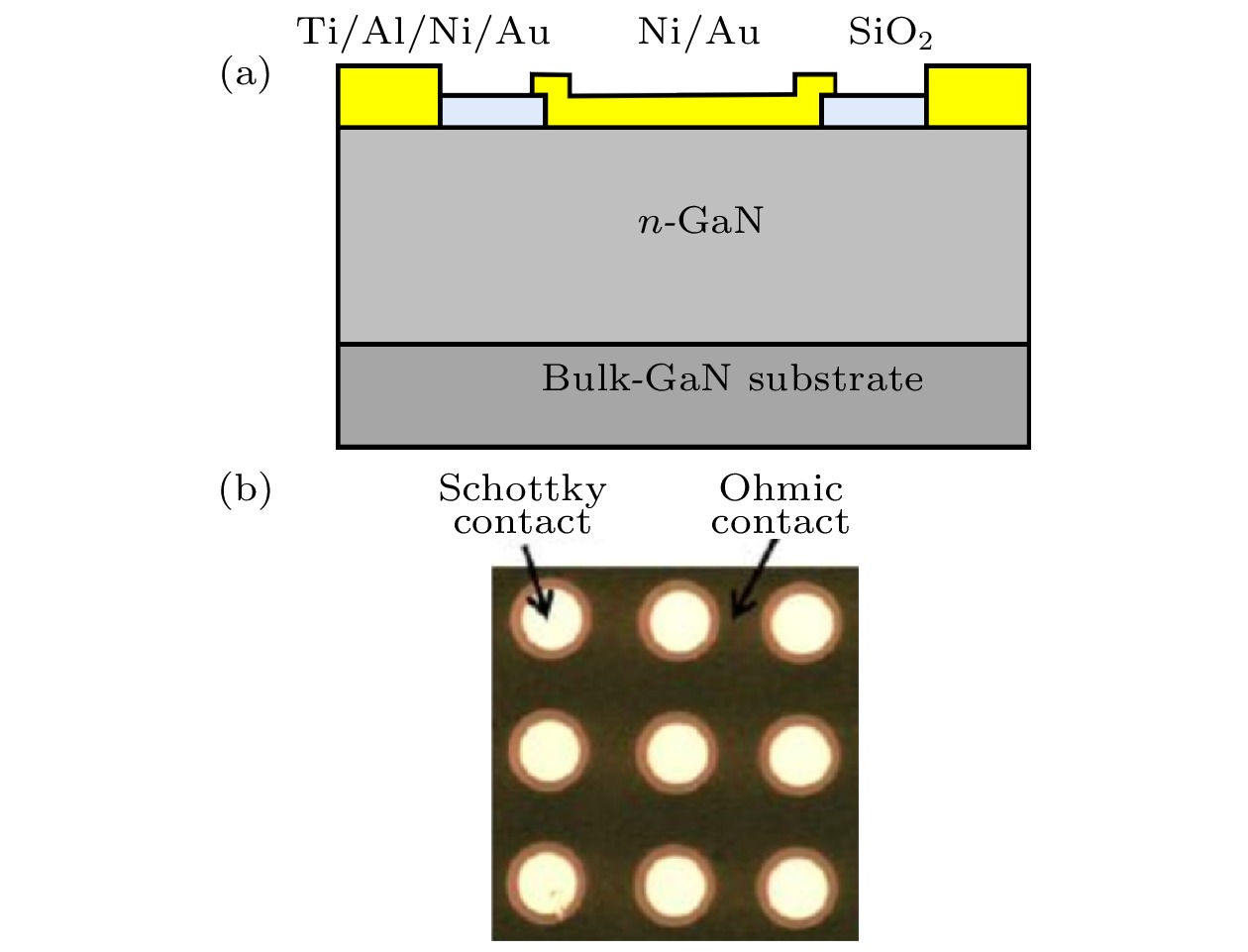
2021, 70 (8): 087201.
doi: 10.7498/aps.70.20201467
Abstract +
In this work, we first measure the forward temperature-dependent current-voltage (T-I-V) characteristics of the GaN-based Schottky diodes grown on the bulk GaN substrates, and then study the transport mechanisms of the forward current and the low-frequency current noise behaviors under various injection levels. The results are obtained below. 1) In a forward high-bias region the thermionic emission current dominates, and the extracted barrier height is about 1.25 eV at T = 300 K, which is close to the value measured by capacitance-voltage sweeping. 2) In a forward low-bias region (V < 0.8 V) the current is governed by the trap assist tunneling process, having an ideality factor much larger than 1, and the derived barrier height is about 0.92 eV at T = 300 K, which indicates that the conductive dislocation should be mainly responsible for the excessive leakage current, having a reduced barrier around the core of dislocations. 3) The Lorentzian noise appears only at very small current (I < 1 μA) and low frequency (f < 10 Hz), whose typical time constant is extracted to be about 30 ms, depending on the multiple capture and release process of electrons via defects. 4) At a higher frequency and current, the low-frequency 1/f noise becomes important and the corresponding coefficient is determined to be about 1.1, where the transport is affected by the random fluctuation of the Schottky barrier height.

2021, 70 (8): 087301.
doi: 10.7498/aps.70.20201742
Abstract +
In the Su-Schrieffer-Heeger (SSH) chain, the nontrivial topological edge states will have different winding numbers when the intra-cell and inter-cell hopping amplitudes are spin-dependent ones. Consequently, how to detect the edge states with different winding numbers theoretically and experimentally has become one of important topics in condensed matter physics. In this paper, in the framework of the tight-binding approximation, we study the topological properties and the electron transport properties of the edge states of the SSH chain with the spin-orbit coupling. It is demonstrated that the winding numbers of the quadruple-degenerate and twofold-degenerate edge states are two and one, respectively. Importantly, the electron transport properties in the vicinity of the zero energy can characterize the energy spectra of the edge states, when the spin-polarized electrons tunnel into the SSH chain from the source lead, namely, the source lead is a ferromagnetic one. With increasing the tunneling coupling strengths between the SSH chain and the two leads from the weak coupling regime to the strong coupling one, the number of transmission resonance peaks of the quadruple-degenerate with the winding numbers being two and twofold-degenerate edge states with the winding numbers being one will be reduced by four and two, respectively. In other words, the transmission resonance peaks related to the edge states will disappear when the SSH chain is strongly coupled to the two leads. Therefore, these results suggest an alternative way of detecting the nontrivial topological ones with different winding numbers by changing the number of transmission resonance peaks of edge states.
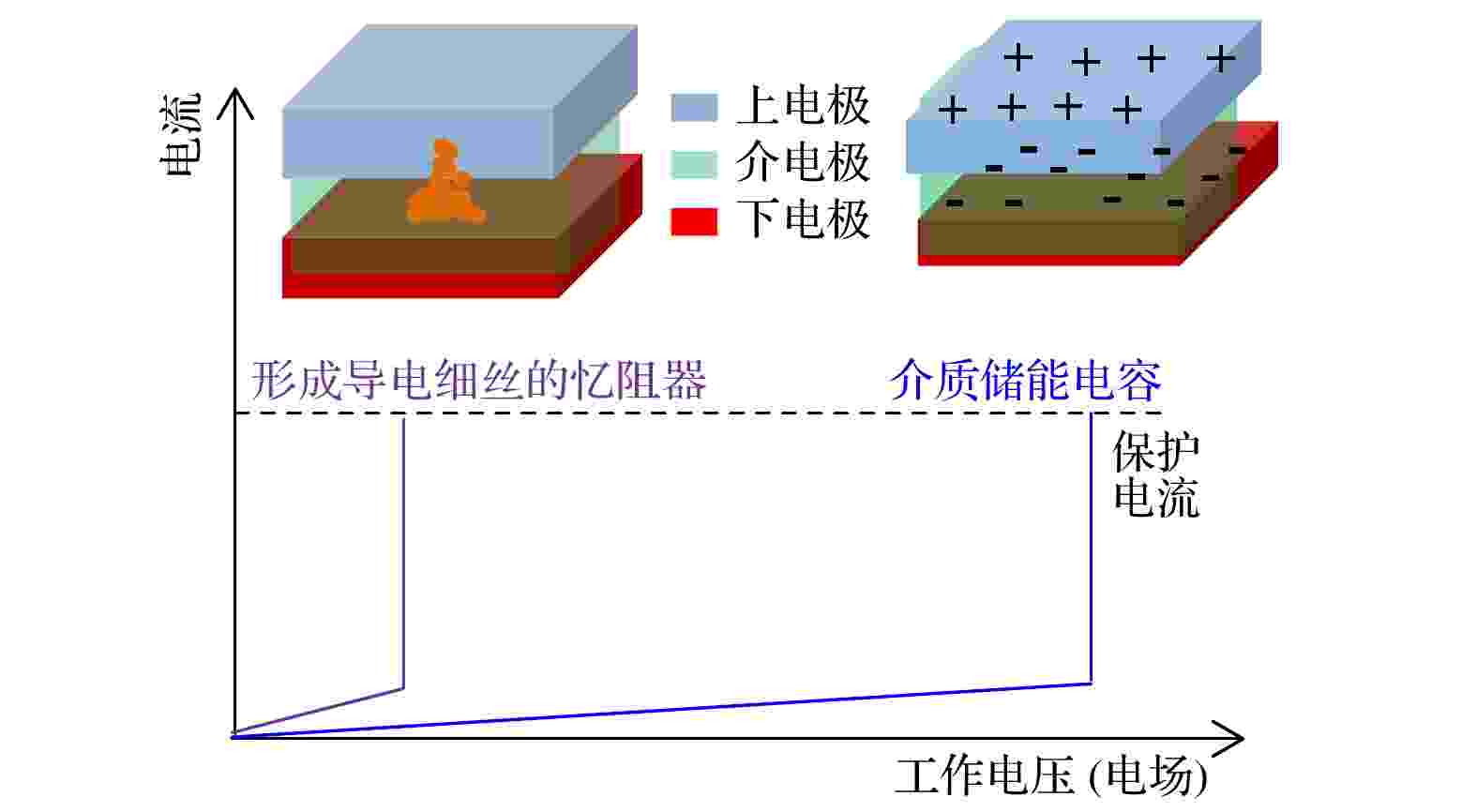
2021, 70 (8): 087302.
doi: 10.7498/aps.70.20201262
Abstract +
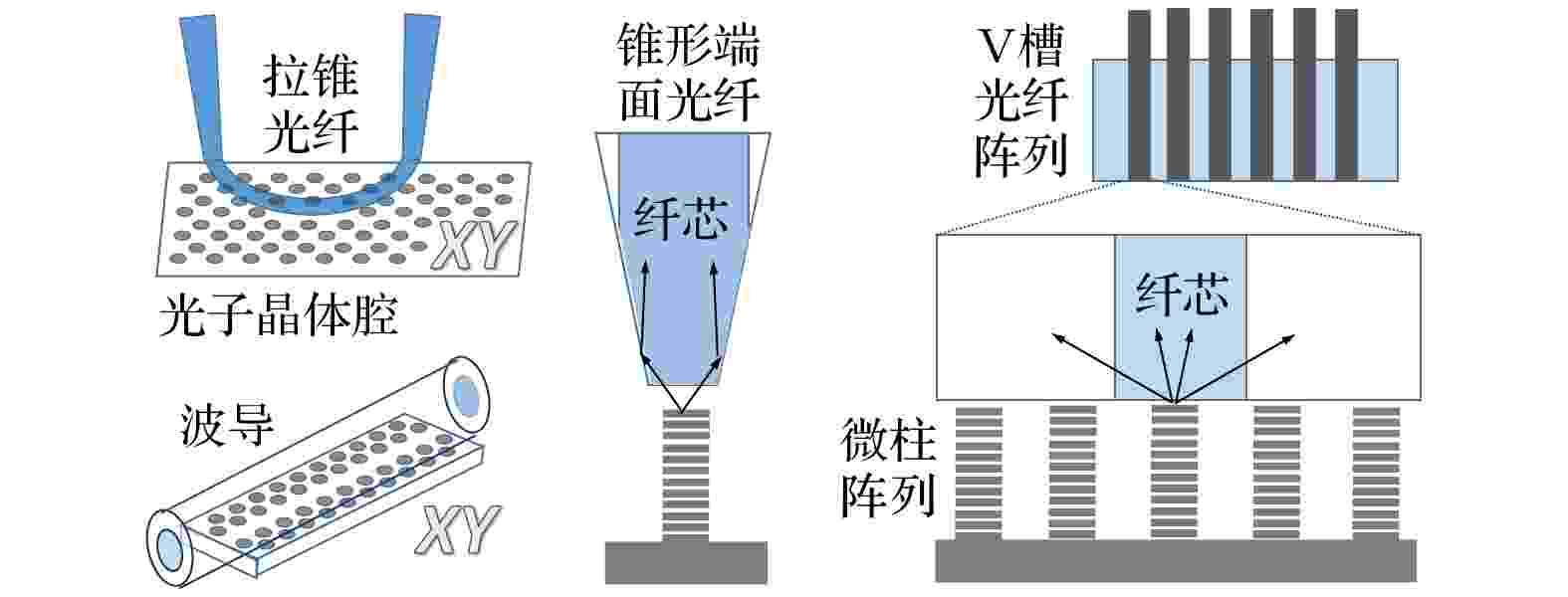
2021, 70 (8): 087801.
doi: 10.7498/aps.70.20201605
Abstract +
Semiconductor quantum dot (QD) at low temperature will create excitons with sharp spectral lines for single photon emission. Optical fiber coupling avoids scanning for positioning and vibration influence in low-temperature confocal setup, and is a key technology in realizing the plug-play and componentization of QD single photon sources. For the fiber coupling techniques, the lateral coupling of a photonic crystal cavity or waveguide with a tapered fiber, or normal coupling of a QD chip with a tapered facet fiber in a large numerical aperture has been developed based on mask in a micro-region; however, the above techniques require multi-dimensional precise adjusting in order to avoid abnormally bending a soft fiber to realize alignment and high-efficiency coupling. Ceramic ferrule or silica V-shaped groove-mounted fiber has a large smooth facet and no bending; it can collect light in the normal direction by being aligned with bonding QD chip; V-shaped groove-mounted fiber array also enables a random adhesion and avoid scanning for alignment, which is simple in technique. This work is based on the previous realization of single photon output by random adhesion of few-pair DBR micropillar chip with V-shaped groove-mounted fiber array, and uses many-pair DBR cavity chip with theoretical simulation optimization to improve the normal light extraction and its fiber collection efficiency, and greatly improves the fiber output of single photon count rate.
INTERDISCIPLINARY PHYSICS AND RELATED AREAS OF SCIENCE AND TECHNOLOGY
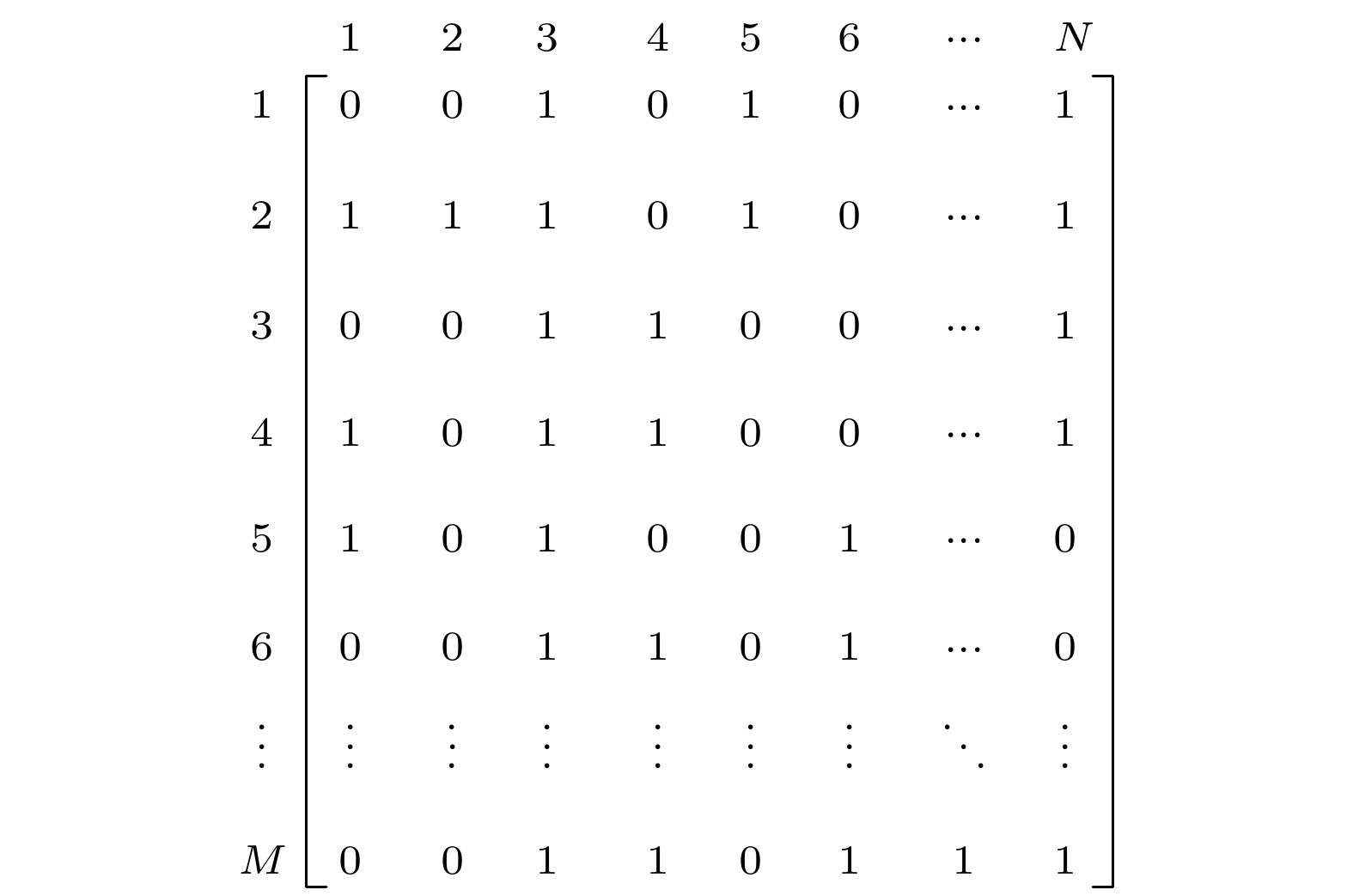
2021, 70 (8): 088901.
doi: 10.7498/aps.70.20201756
Abstract +
The structure and the function of network interact with each other. The function of network is often reflected as the dynamic process on the network. The dynamic process on the network is reflected by the behavior data in the network. Therefore, it is possible to reconstruct the network structure according to the observed data. This paper aims to solve the problem of how to restore the network topology according to the observable discrete data on the network. In this paper, an algorithm to infer the possibility of edge connection between nodes is proposed by using the similarity degree of each node corresponding to each discrete datum, and by reconstructing each local topology of the network through multiple discrete data, and by superposing the local topology obtained from multiple data, the global topology of the whole network is reconstructed finally. The data in the network are generated by SIR (Susceptible Infective Removed) model with infection probability of 0.2 and recovery probability of 1. Each time, a single node is selected as the infected node, and the final infection state of the network is counted as a network datum. In order to verify the feasibility and accuracy of the algorithm, the network reconfiguration experiments are carried out in small world, scale-free and random networks. Through the network reconstruction experiments in the networks of three different types and different scales, we can see that the performances of network reconstruction algorithm in different types of networks are different, and the average degree of network will affect the requirements for data of the network reconstruction algorithm. In order to verify the applicability of the algorithm, network reconstruction experiments are carried out on three practical networks. The results show that the algorithm can be applied to the reconstruction of large-scale networks. In order to show the accuracy of the algorithm more intuitively, we analyze the network reconstruction error after each network reconstruction experiment. The experiment shows that with the gradual increase of network data, the network reconstruction error gradually decreases and finally approaches to 0. In a nutshell, the algorithm we proposed in this work has good applicability and accuracy, and is suitable for different types of network topology reconstructions.








